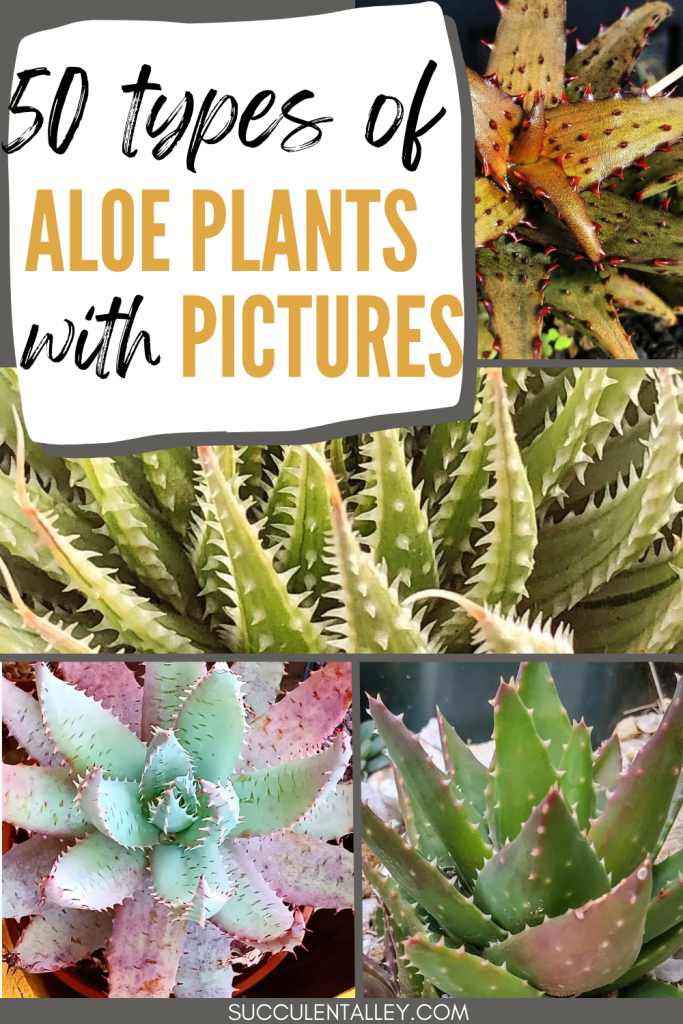50+ Stunning Aloe Species That Double As Living Art
Succulents are totally in right now, but you’ve probably never seen aloe varieties as wild and wacky as these! Get ready to have your mind blown by 50+ of the most eye-catching, out-of-this-world aloe species that will make you do a double-take. From funky shapes to vibrant colors, these living sculptures put the “wow” in houseplants. And the best part? We’ve made them super easy to learn about. Let’s dive into aloe awesomeness!
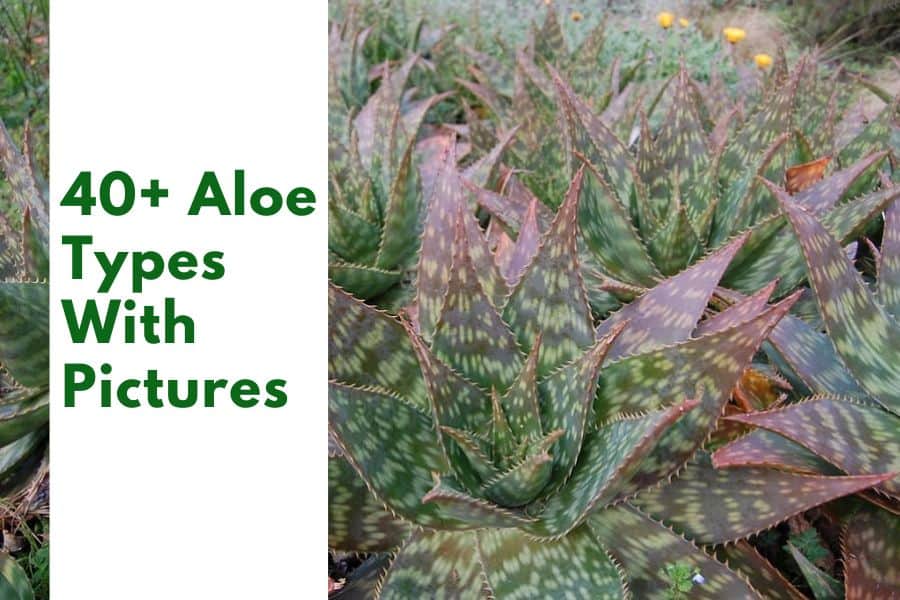
Related Post:
1,000 Types of Succulents With Pictures
Contents
- 1 Types of Aloe Plants
- 1.1 Aloe aculeata
- 1.2 Aloe acutissima
- 1.3 Aloe africana
- 1.4 Aloe alooides
- 1.5 Aloe arenicola
- 1.6 Aloe aristata
- 1.7 Aloe arborescens
- 1.8 Aloe bakeri
- 1.9 Aloe bellatula
- 1.10 Aloe brevifolia
- 1.11 Aloe broomii
- 1.12 Aloe camperi
- 1.13 Aloe carmine
- 1.14 Aloe castilloniae
- 1.15 Aloe chabaudii
- 1.16 Aloe conifera
- 1.17 Aloe Coral Fire
- 1.18 Aloe Crosby’s Prolific
- 1.19 Aloe cryptopoda
- 1.20 Aloe descoingsii
- 1.21 Aloe divaricata
- 1.22 Aloe ellenbeckii
- 1.23 Aloe erinacea
- 1.24 Aloe excelsa
- 1.25 Aloe falcata
- 1.26 Aloe ferox
- 1.27 Aloe ‘Firebird’
- 1.28 Aloe fleurentiniorum
- 1.29 Aloe gariepensis
- 1.30 Aloe grandidentata
- 1.31 Aloe harlana
- 1.32 Aloe haworthioides
- 1.33 Aloe humilis
- 1.34 Aloe jucunda
- 1.35 Aloe koenenii
- 1.36 Aloe krapohliana
- 1.37 Aloe lineata
- 1.38 Aloe mawii
- 1.39 Aloe Medusa
- 1.40 Aloe nobilis
- 1.41 Aloe parvula
- 1.42 Aloe peglerae
- 1.43 Aloe pillansii
- 1.44 Aloe polyphylla
- 1.45 Aloe rauhii
- 1.46 Aloe sabaea
- 1.47 Aloe saponaria (Aloe maculata)
- 1.48 Aloe sladeniana
- 1.49 Aloe somaliensis
- 1.50 Aloe striata
- 1.51 Aloe suprafoliata
- 1.52 Aloe suzannae
- 1.53 Aloe thraskii
- 1.54 Aloe ‘Twilight Zone’
- 1.55 Aloe variegata
- 1.56 Aloe vryheidensis
- 1.57 Aloe ‘Walmsley’s Blue’
- 1.58 Aloe zanzibarica
- 2 Plants that Look Like Aloe
Types of Aloe Plants
Aloe aculeata

This creeping crazy aloe can stretch 27 inches long with thick, spiky reddish leaves up to 24 inches! Its tall bright yellow flower spikes reaching 39 inches are the cherry on top.
Aloe acutissima
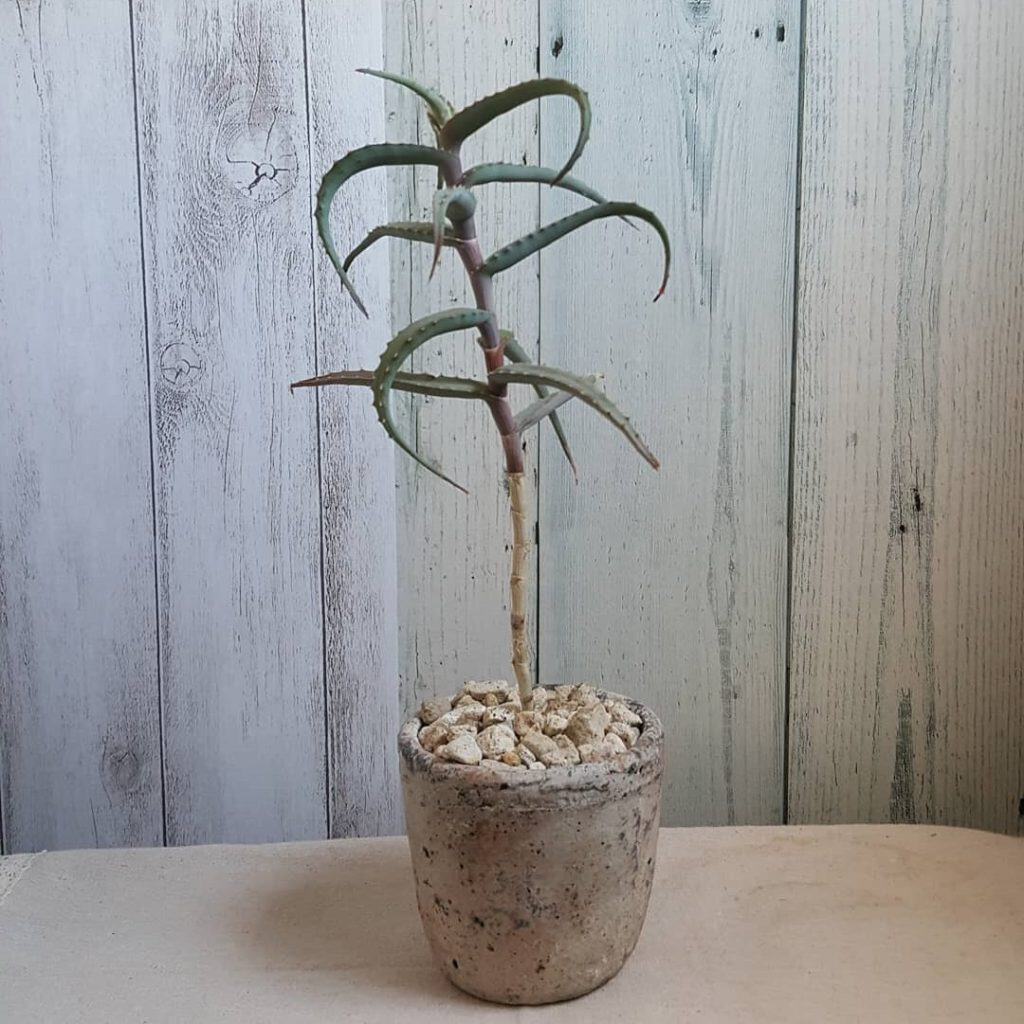
Don’t let the name fool you – the Blue Spider Aloe is super cool with its pink branching stems and fleshy lilac leaves lined with teeth. A real head-turner!
Aloe africana
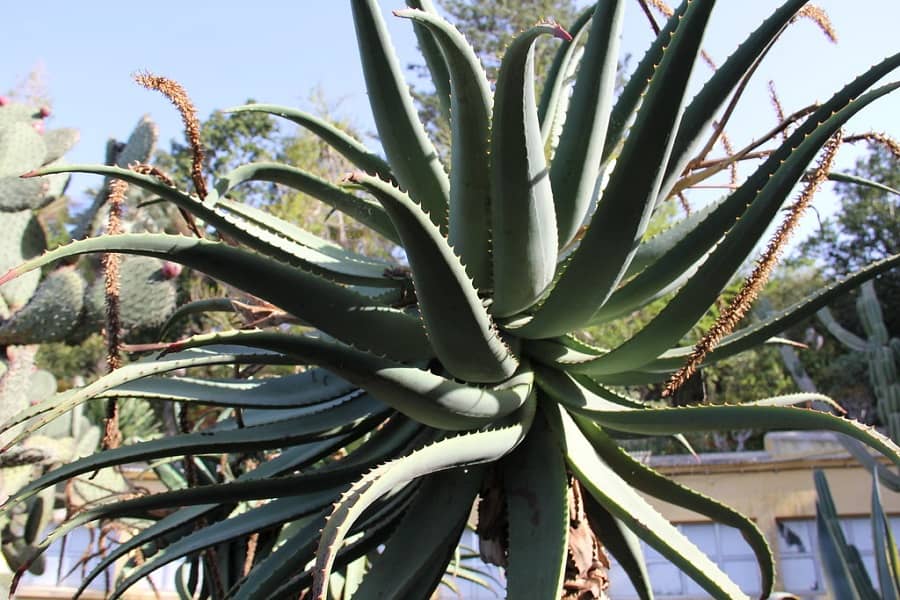
Hailing from Africa, this branching beauty can grow over 13 feet high trunk and all. Its dense yellow-orange candle-like flower clusters are lit!
Aloe alooides
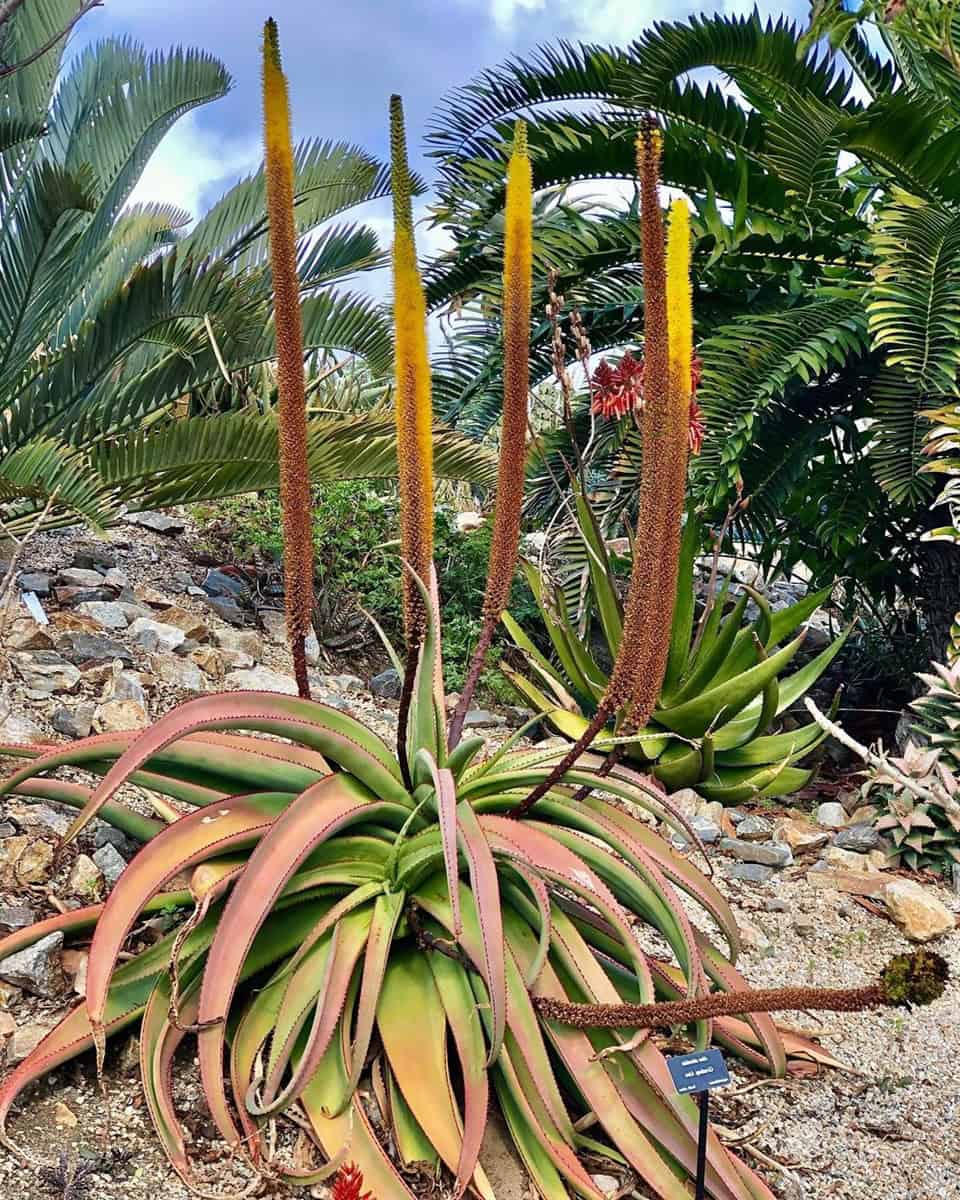
This solo-stemmed succulent from South Africa might seem plain at first with its green leaves, but wait until you see its teeny yellow bell flowers bloom!
Aloe arenicola
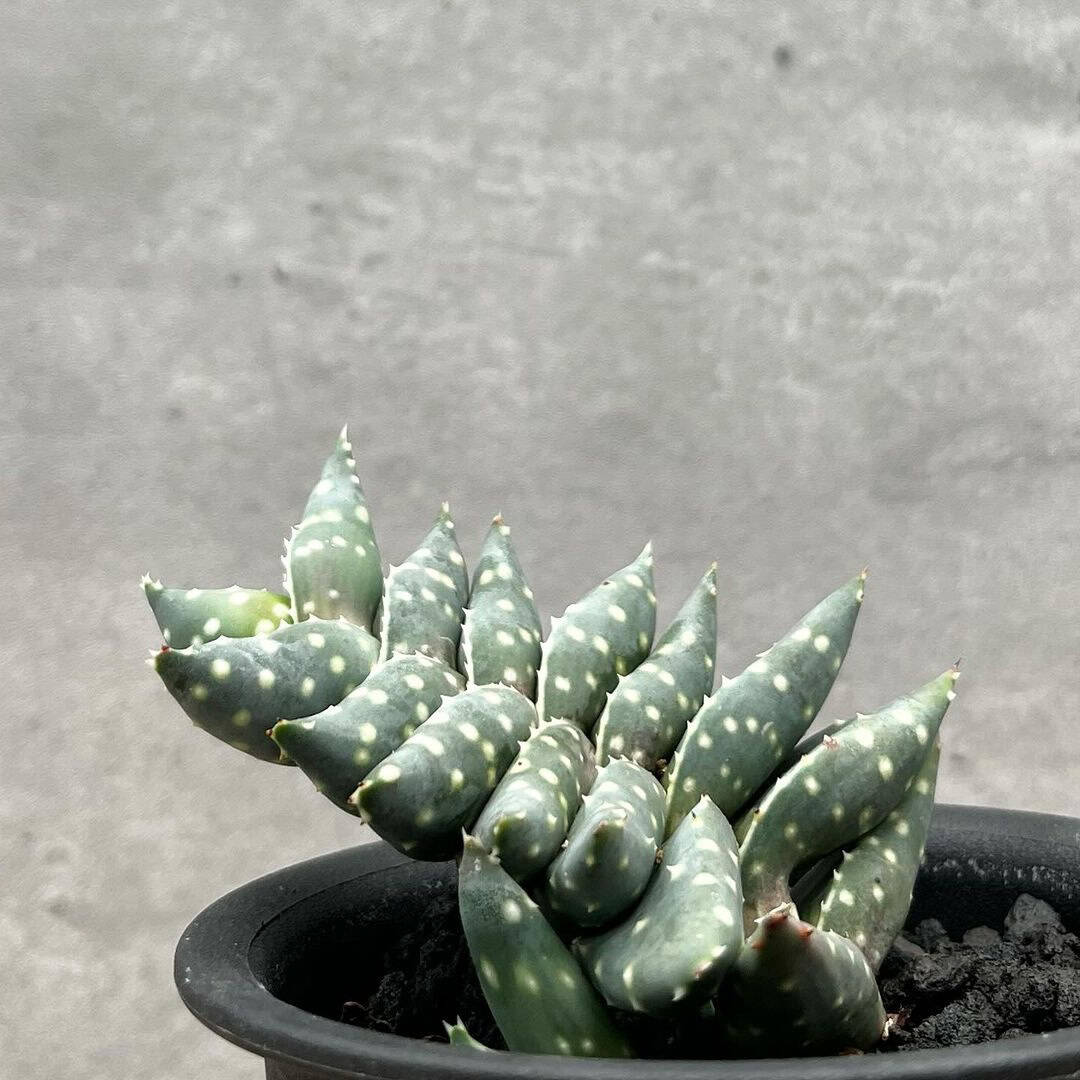
Crawling along the ground, the Sand Aloe’s narrow bluish leaves have tons of white spots giving it a speckled, one-of-a-kind look.
Aloe aristata
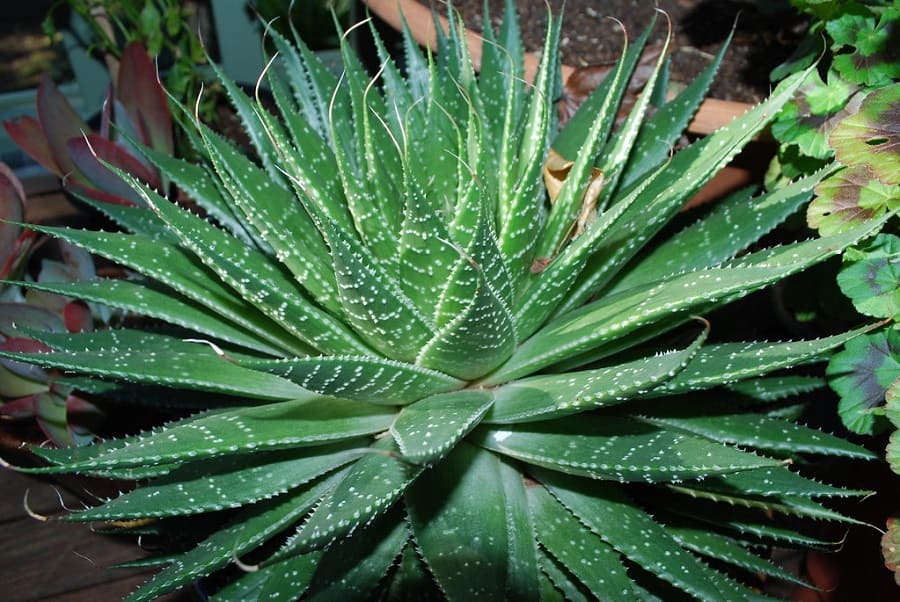
This little aloe’s brilliant orange blooms in May are a fleeting treat – lasting just a few days but making a big impression!
Aloe arborescens
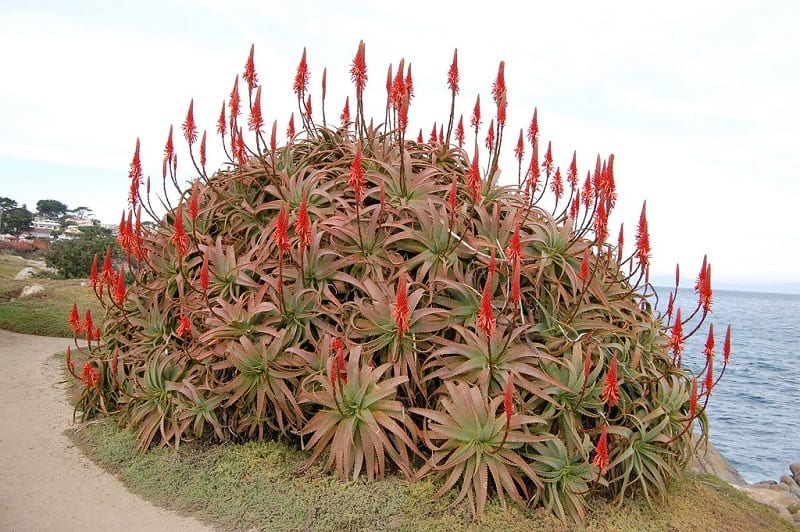
Imagine a 2-3 foot bush exploding with vibrant red-orange flower spikes up to 31 inches tall. That’s what you get with this tree-like aloe!
Aloe bakeri
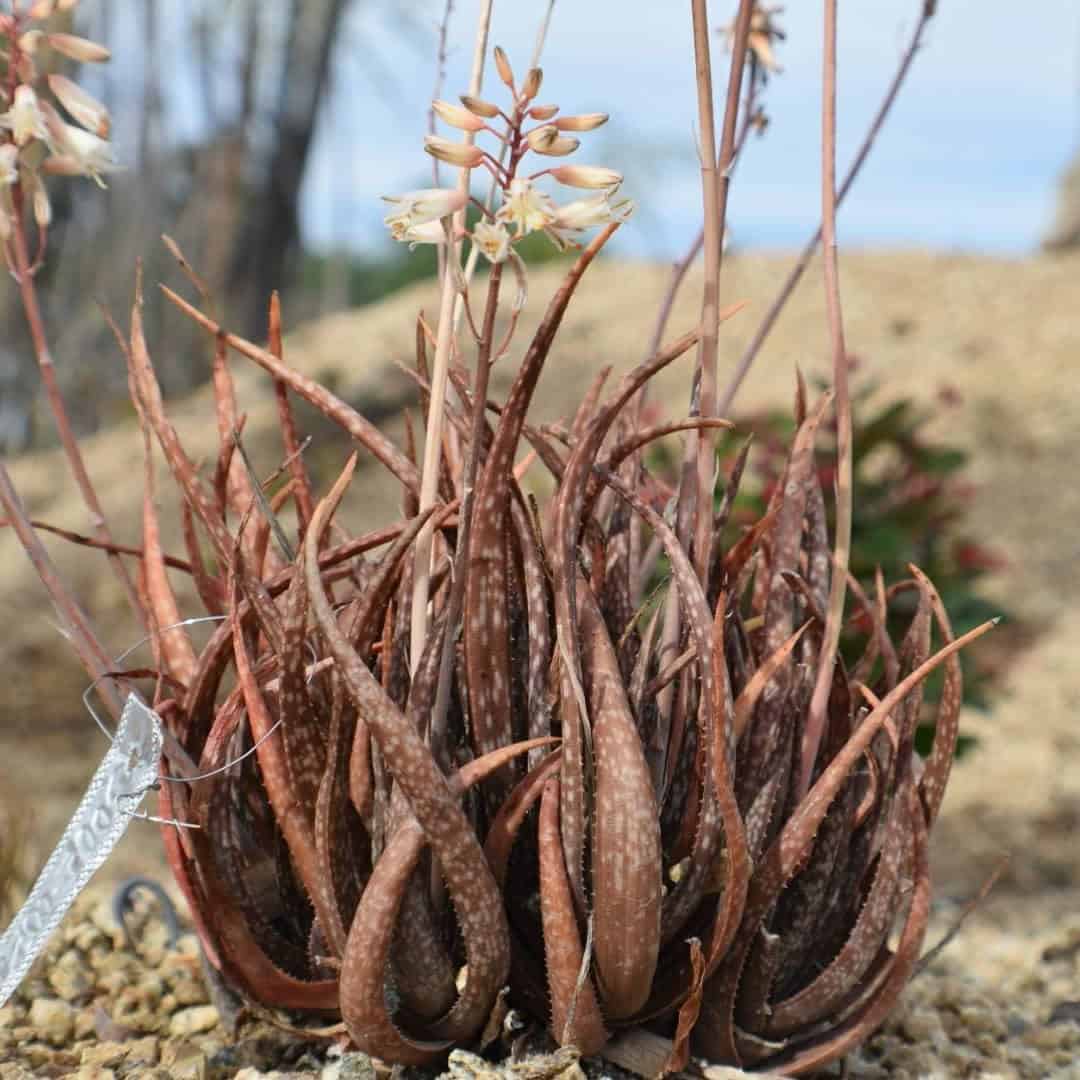
At under 16 inches wide, the Baker’s Aloe is a tiny titan sporting green sticky leaves that go pinky-red in bright light. Its red bell flowers are the cherry on top.
Aloe bellatula
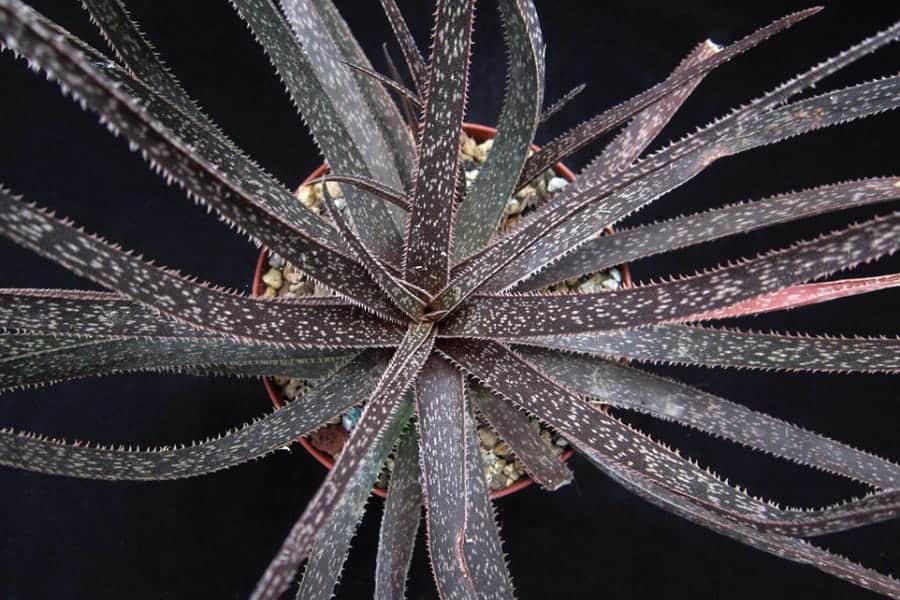
This cute rosette grows curved green leaves just 5 inches high covered in white spots with spiky red edges. The bright red bell-shaped blooms seal the deal!
Aloe brevifolia
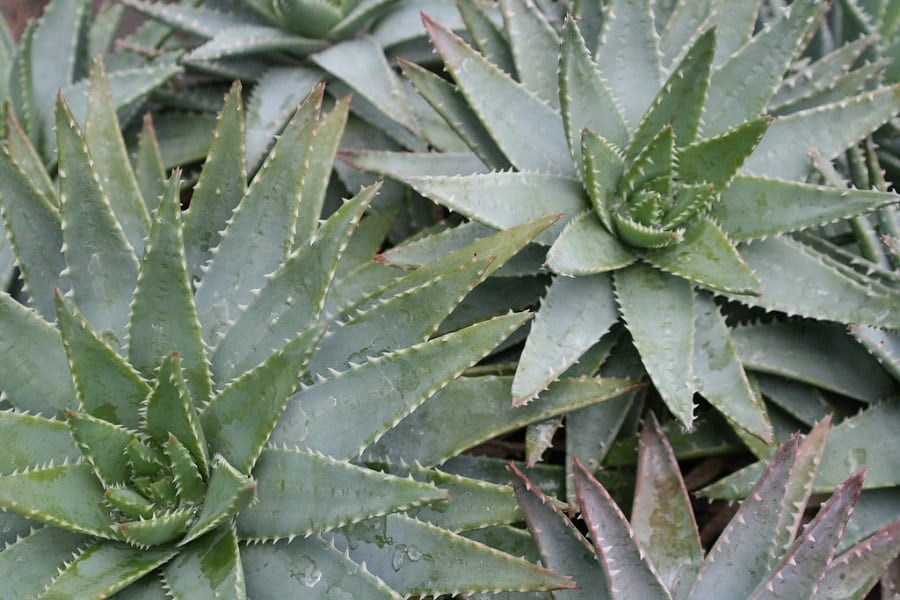
Short but oh-so-sweet, this aloe’s thick deep red flower stalks top out at almost 12 inches and pack a colorful punch.
Aloe broomii
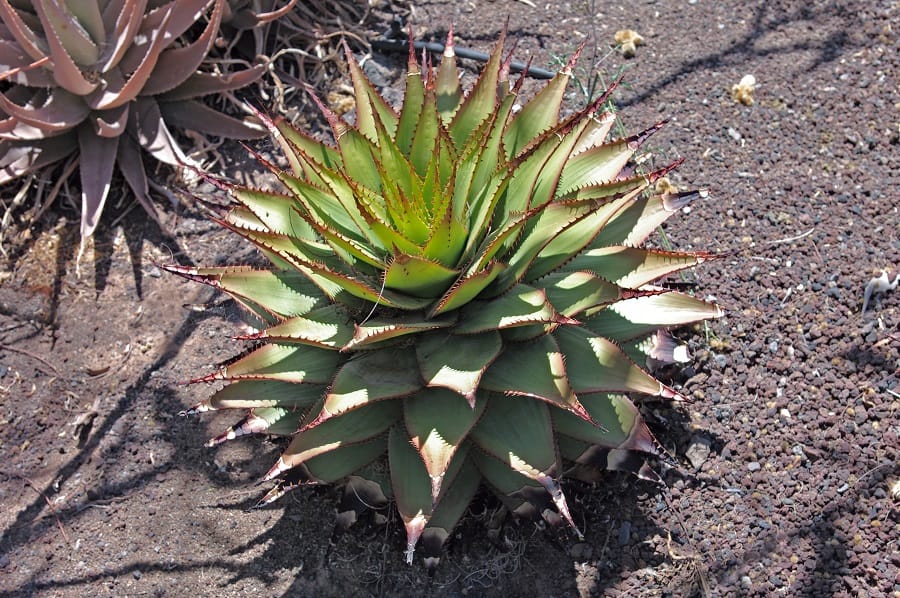
This short-trunked aloe from South Africa grows leaves up to almost 12 inches wide at the base. But the real showstopper is the towering 59-inch lemon yellow flower spikes!
Aloe camperi
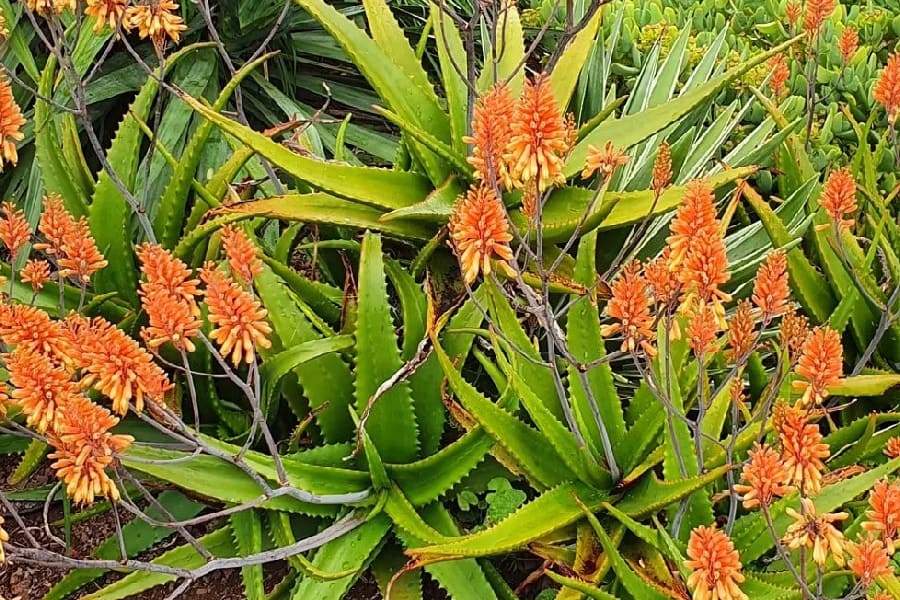
Also called Popcorn Aloe, this spindly-branched African gem grows wild bright orange-red flower clusters taller than the whole 3-foot plant. Crazy cool!
Aloe carmine
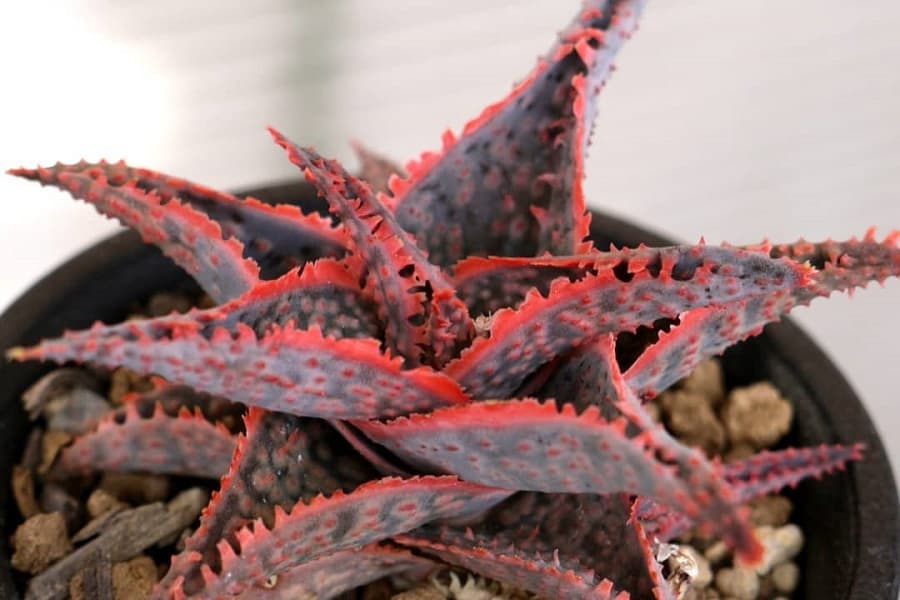
With its dotted orange leaves and striking red flower spikes, this 10-inch rosette looks like it was hand-painted by Mother Nature herself.
Aloe castilloniae
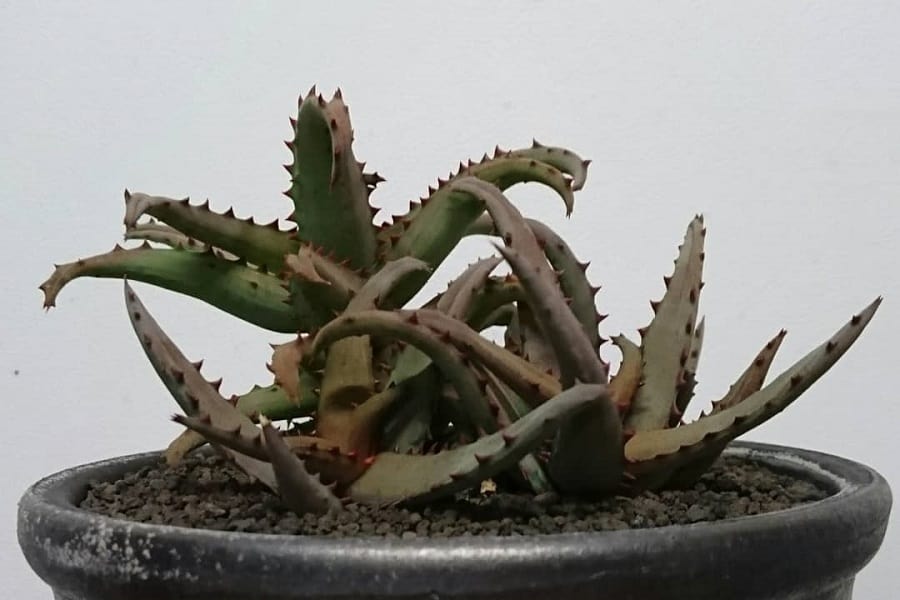
From Madagascar, this vining aloe has tiny Triangle-shaped reddish leaves lined with spikes. Its drooping growth habit makes it a quirky hanging basket candidate!
Aloe chabaudii
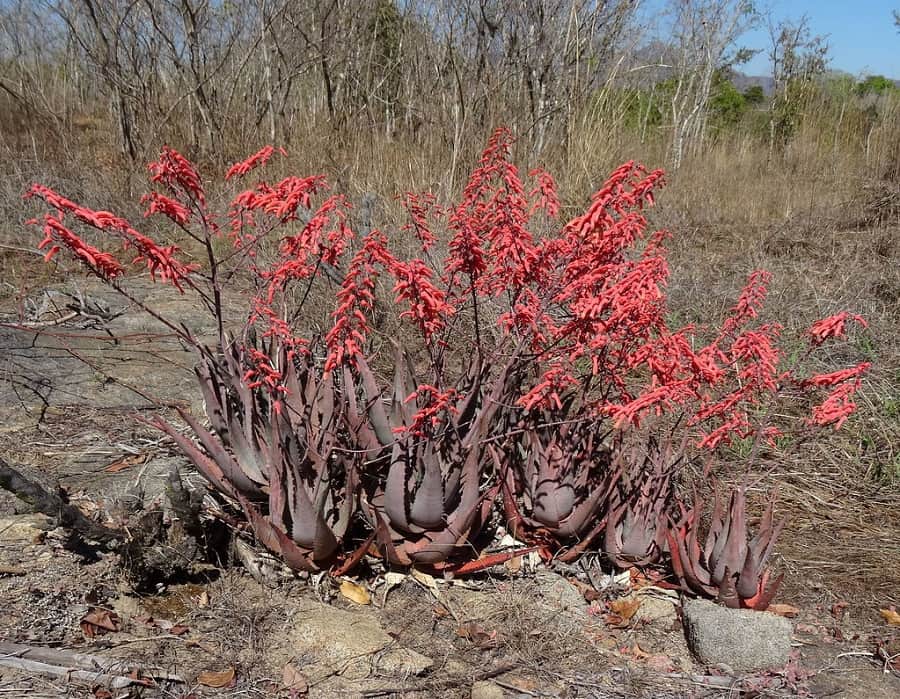
Hailing from Africa, this easygoing aloe forms lush green clusters with reddish borders. Its brick-red branching flower spikes reaching 2-3 feet are total eye candy.
Aloe conifera
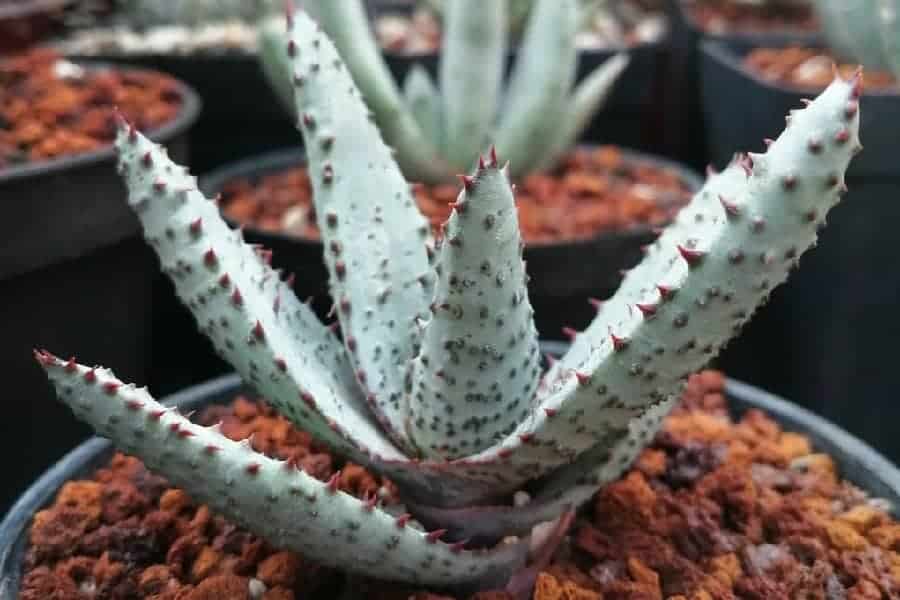
Just half an inch tall, this miniature granite-crevice dweller from Madagascar has light green pinwheel rosettes with reddish spiked edges. Adorable!
Aloe Coral Fire
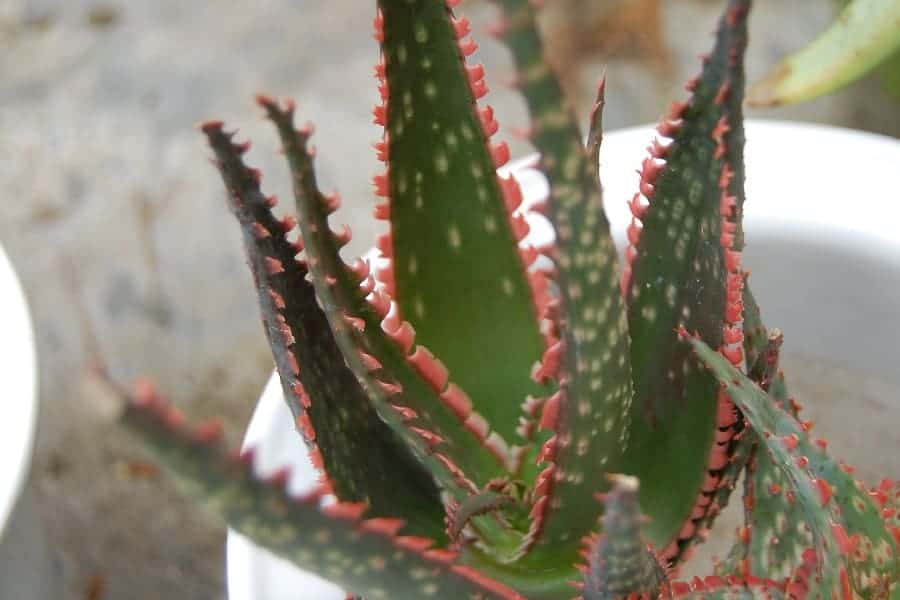
True to its name, this clumping rosette rocks vivid coral-red toothed leaf edges that contrast with the dark green centers as it matures. Red hot!
Aloe Crosby’s Prolific
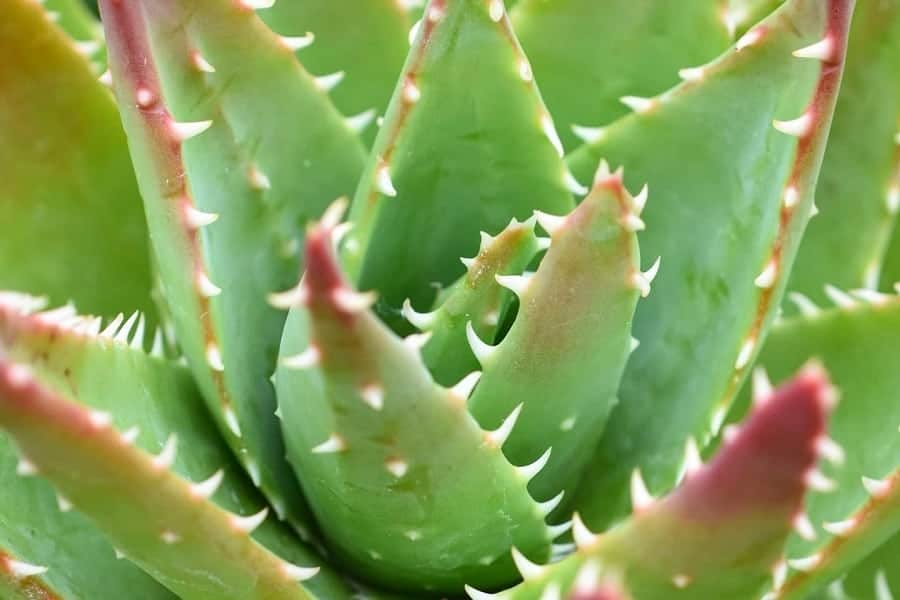
Get ready for a wildflower explosion when this spotted, spiky rosette sends up 18-inch stalks loaded with fiery orange blooms in bright light.
Aloe cryptopoda
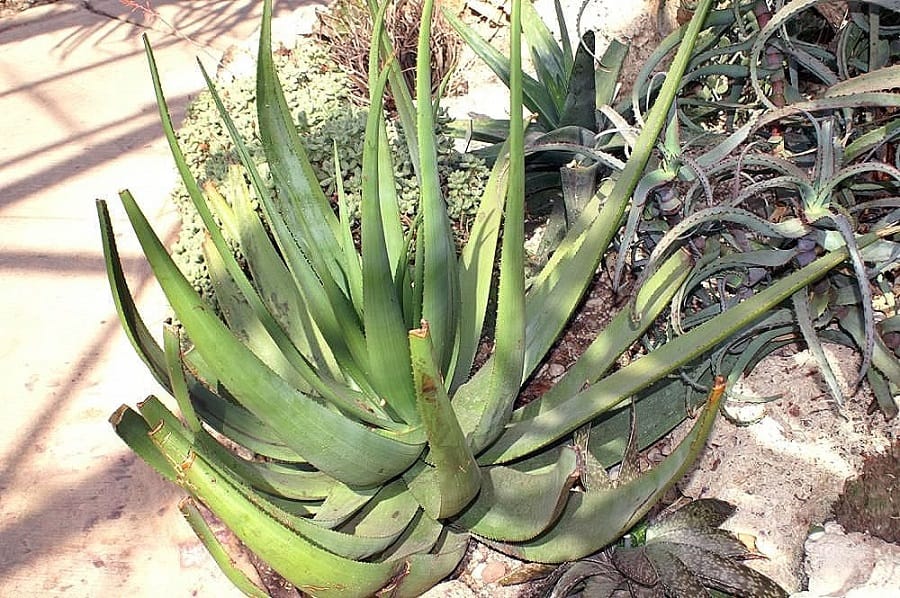
Making a statement with branched bright red-orange flower spikes up to an unreal 69 inches high, this pointy-leaved aloe is daring and dramatic.
Aloe descoingsii
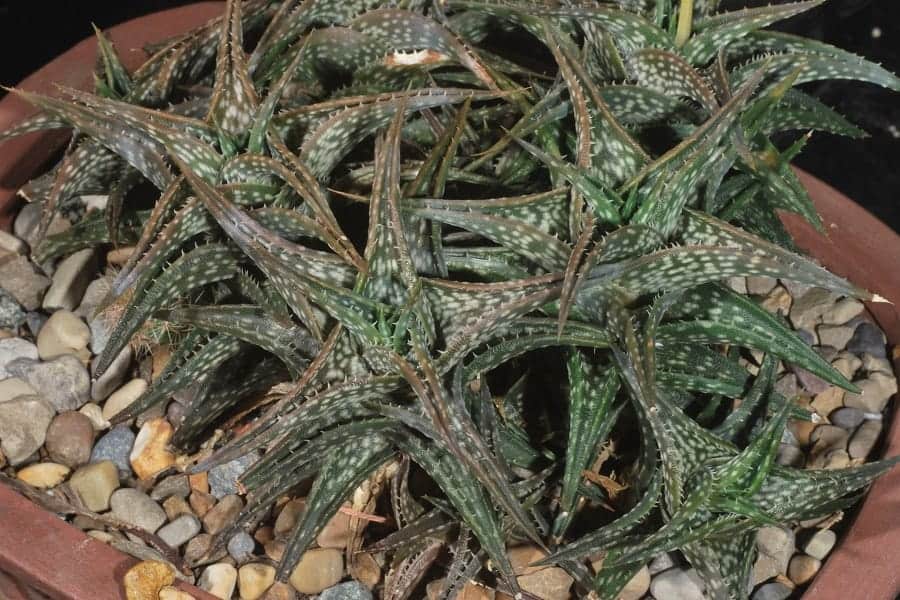
The ultimate tiny treat – this miniature sandbox aloe has dark green wart-covered leaves under 6 inches tall sporting either red or yellow flowers.
Aloe divaricata
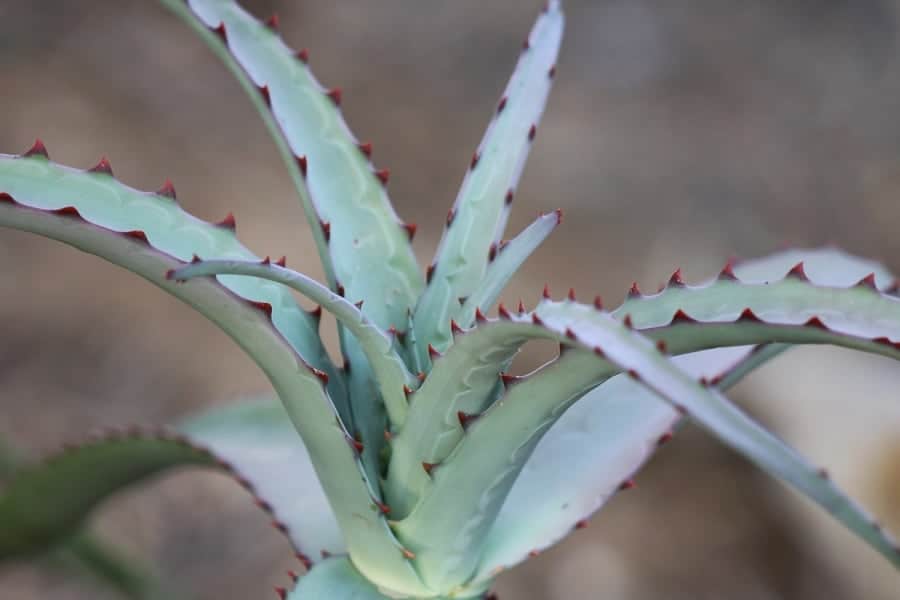
A tall, suckering tree aloe from Madagascar with dark green or reddish spiky leaves and striking red flowers on woody stems. Feisty!
Aloe ellenbeckii
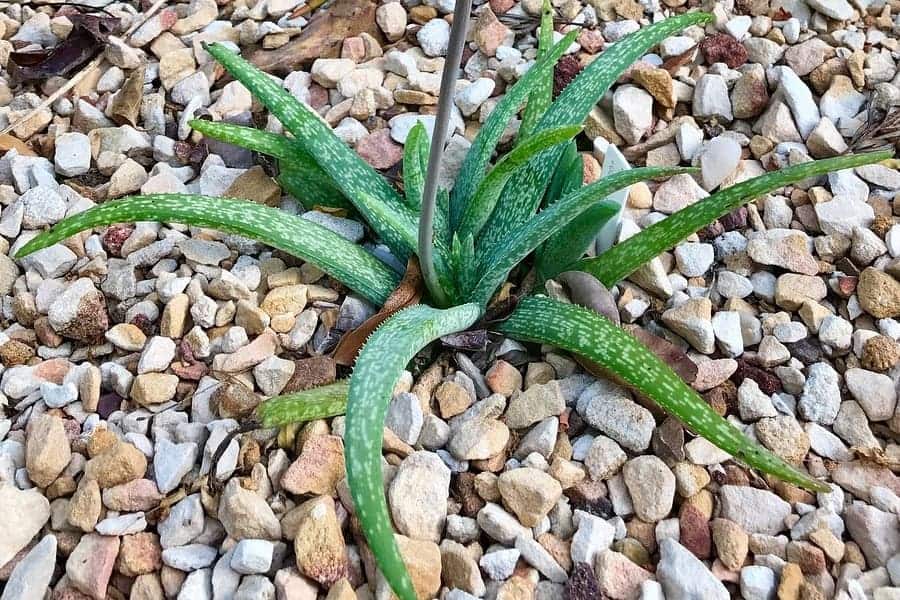
Its long, droopy green and white leaves lined with white teeth give this Kenyan native a totally unique, funky fringe appeal.
Aloe erinacea
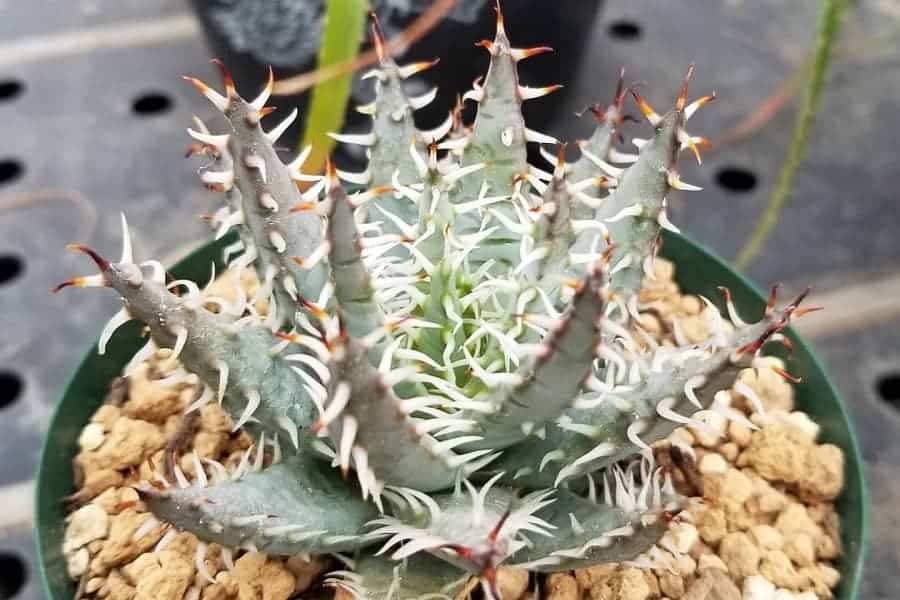
Straight out of Namibia, this spiky spherical bundle has thin brown leaves radiating from a dense core. An ultra-cool statement piece!
Aloe excelsa
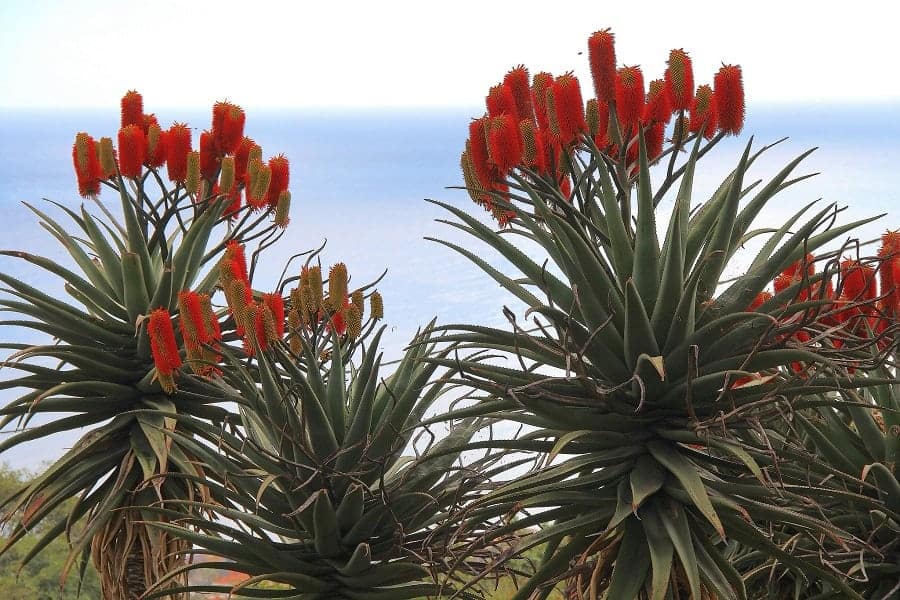
You could get tall tree aloe vibes from this single-stemmed South African species reaching up to 20 feet high with its narrowing dark green leaves.
Aloe falcata
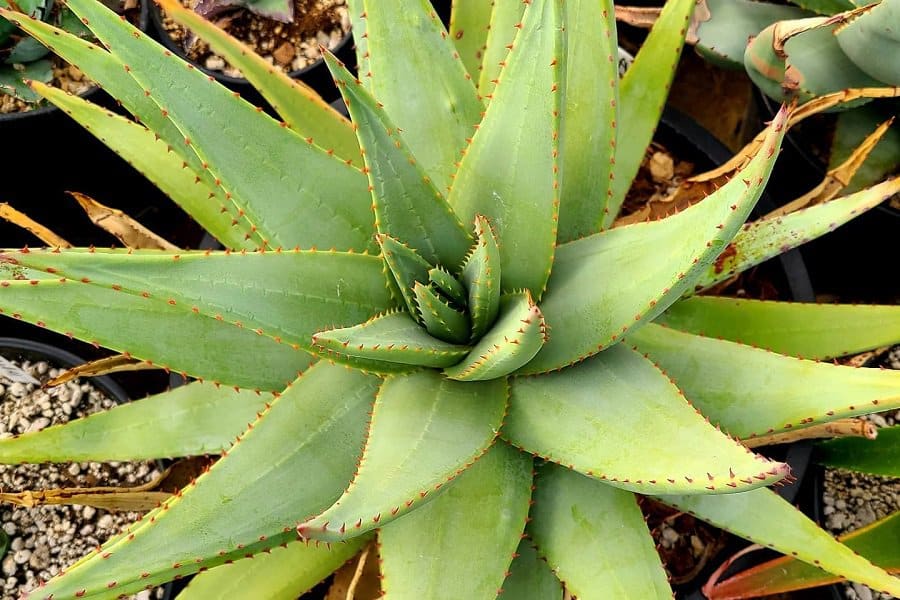
This curvy, sun-loving aloe’s stems arch outward as they grow in hot, dry landscapes. A groovy groundcover for harsh desert areas!
Aloe ferox
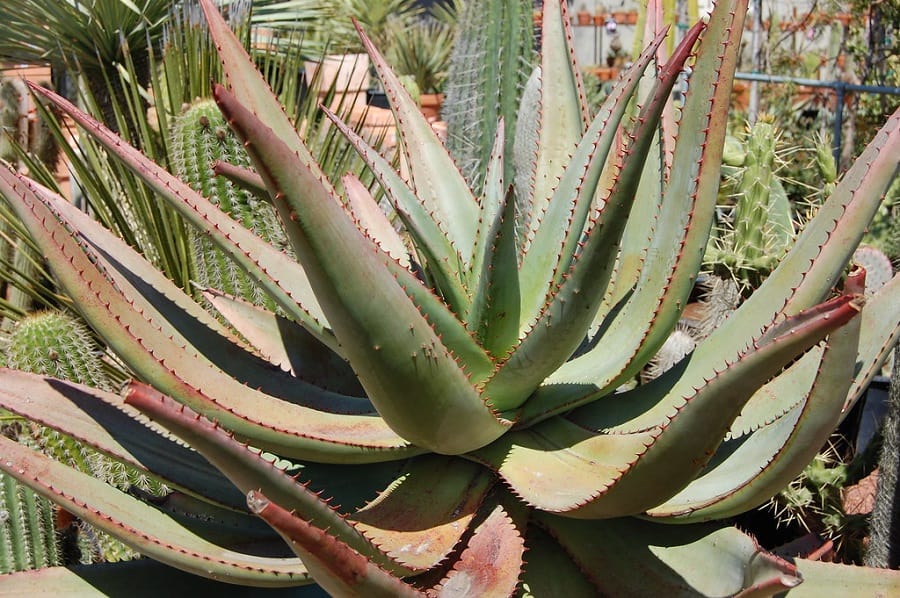
Also known as the Cape aloe or Bitter aloe, this tree-like species from South Africa is a real heavyweight. Its thick, pale green leaves tinged with red can reach up to 39 inches long and are lined with nasty brown thorns on both sides. But the real showstopper is the bright orange-red flower clusters that top out at a towering 51 inches tall! This drama queen succulent packs power and pizzazz. Definitely not one to mess with but oh-so-striking in the right setting.
Aloe ‘Firebird’
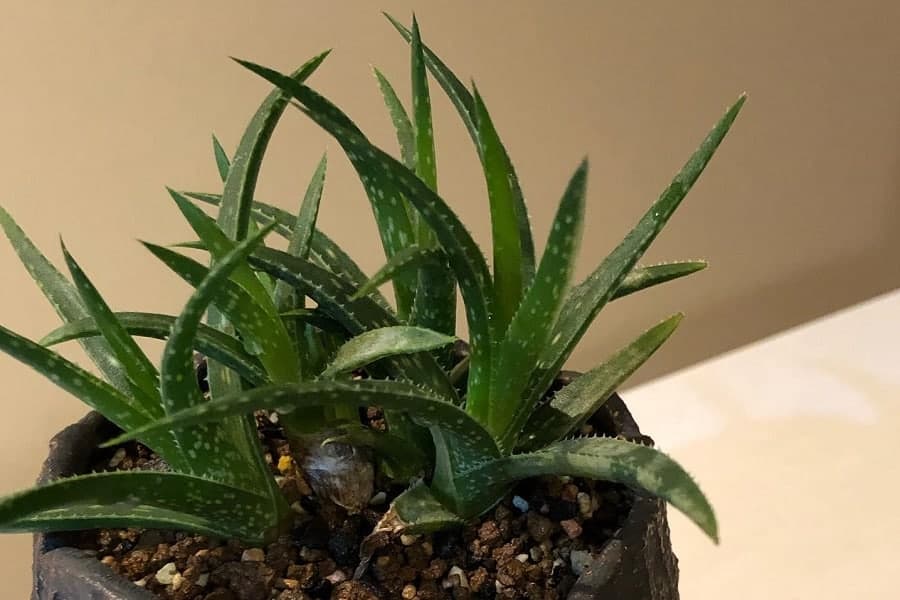
This hybrid’s speckled green leaves stretch outwards in a loose ground-hugging rosette giving it funky octopus-like tendrils. Unique and fresh!
Aloe fleurentiniorum
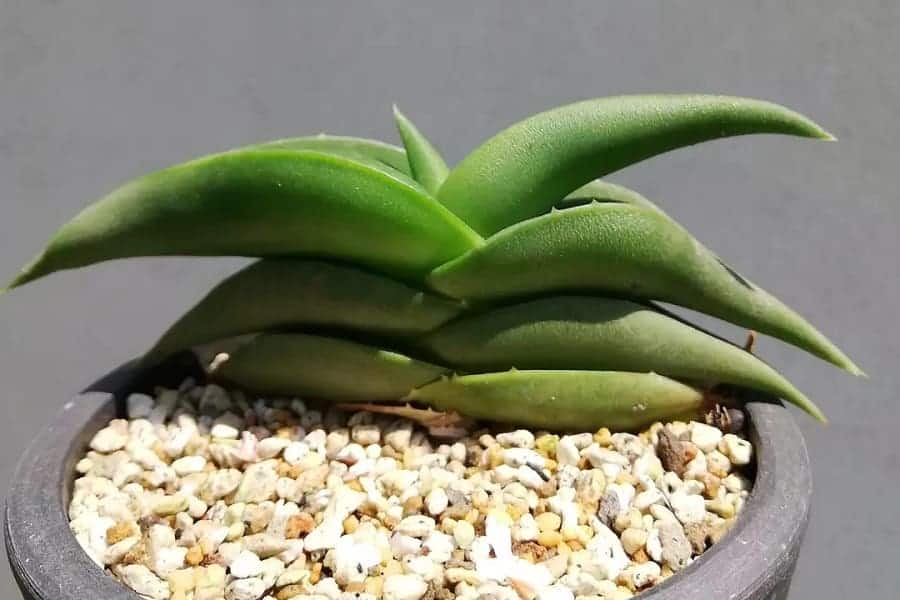
The Yemeni Brown Aloe’s stemless rosette up to 3 feet wide has long, pointed blue-green leaves for an artsy, geometric look. Style for miles!
Aloe gariepensis
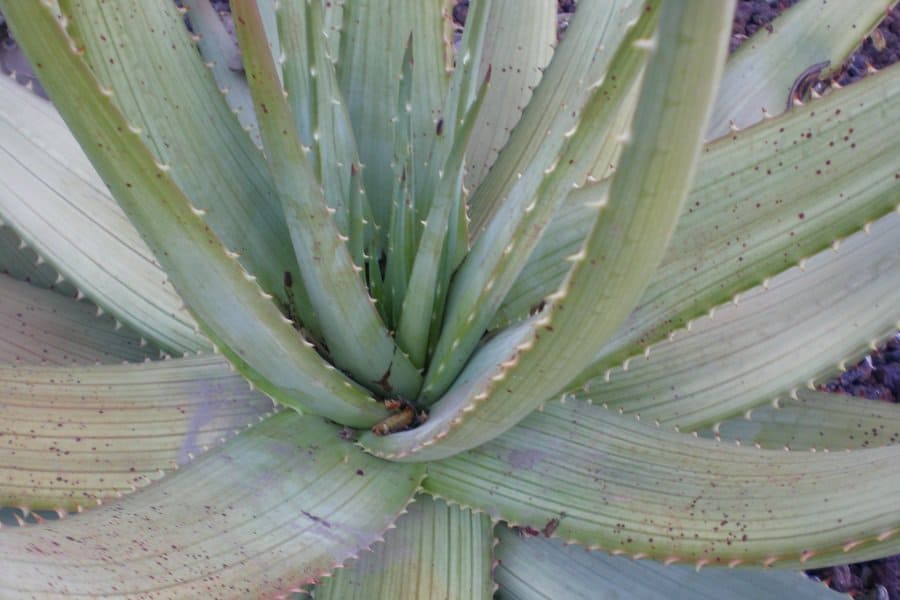
At just 3-4 feet tall, this mini stemless or short-stemmed nugget from Namibia and South Africa packs a punch with its thick, dense rosettes.
Aloe grandidentata
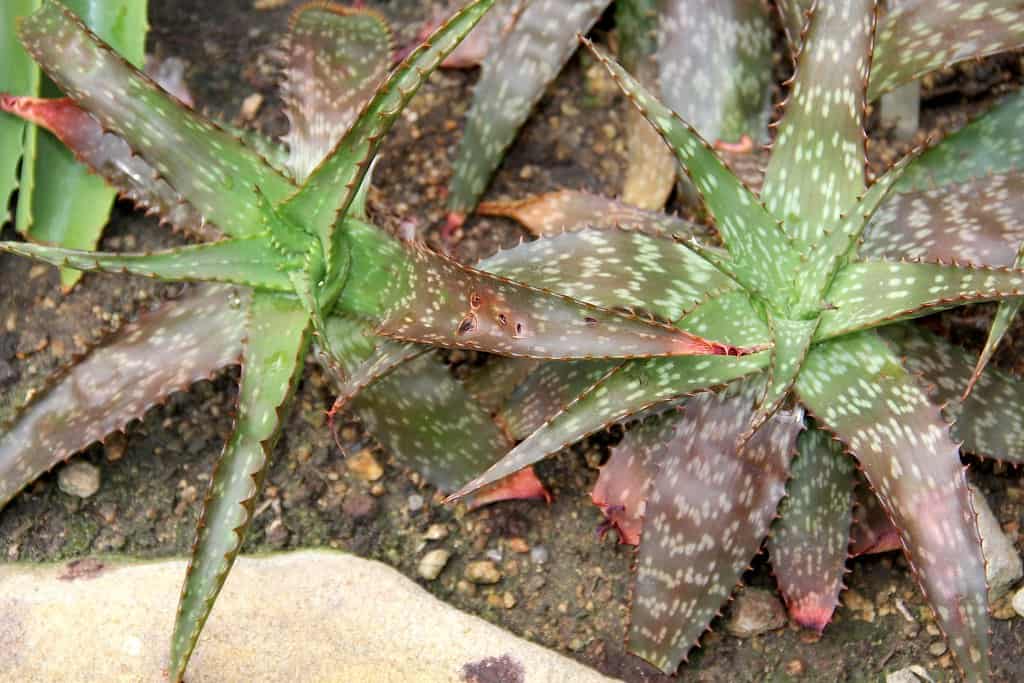
This eye-catching Botswanan crowds bright whitish-red flower spikes up to 35 inches onto its tight green and white speckled rosettes lined with huge teeth!
Aloe harlana
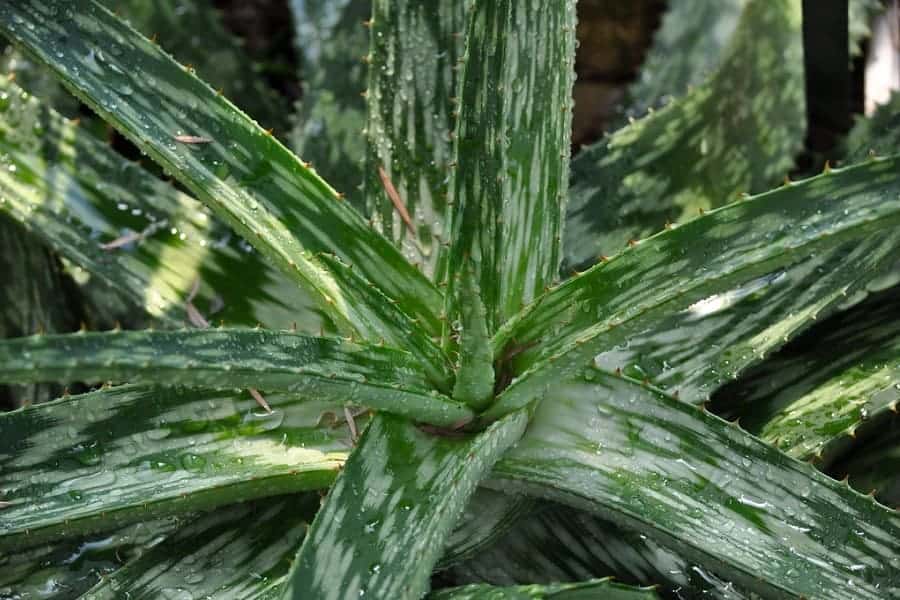
From Ethiopia, this medium-sized cluster of dense rosettes grows about 2 feet tall but can spread much wider thanks to its rapidly growing pups.
Aloe haworthioides
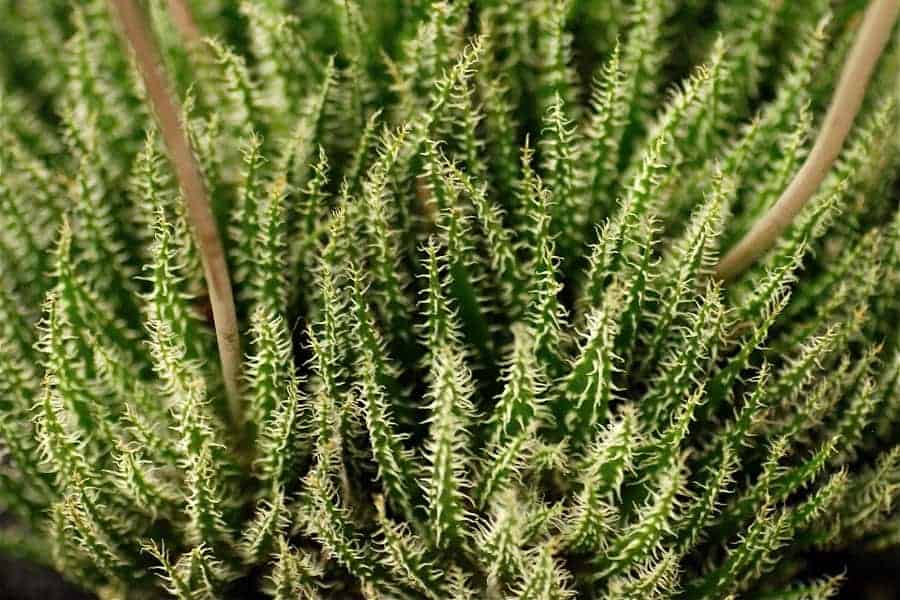
This fast-grower from Madagascar is like a tiny, triangle-leaved tuft of grass only 4 inches high until its brilliant orange blooms arrive!
Aloe humilis
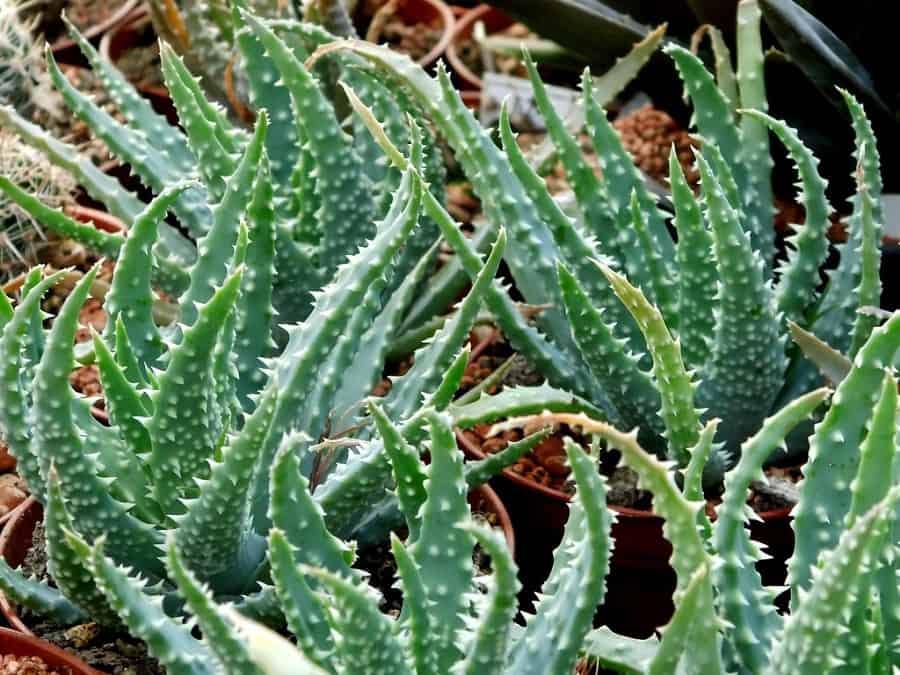
Don’t underestimate this little guy – while it forms a delicate 12-inch rosette, its tall coral-red and yellow racemes stretching 16 inches steal the show.
Aloe jucunda
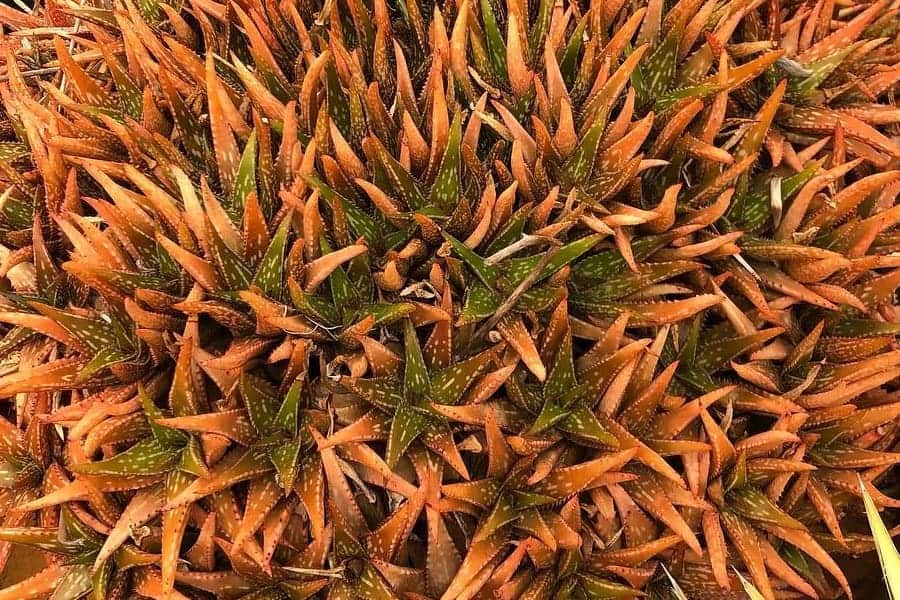
At under 6 inches across, this white-spotted Somalian miniature has dentist-approved triangular leaves with reddish spiked edges and pink flowers.
Aloe koenenii
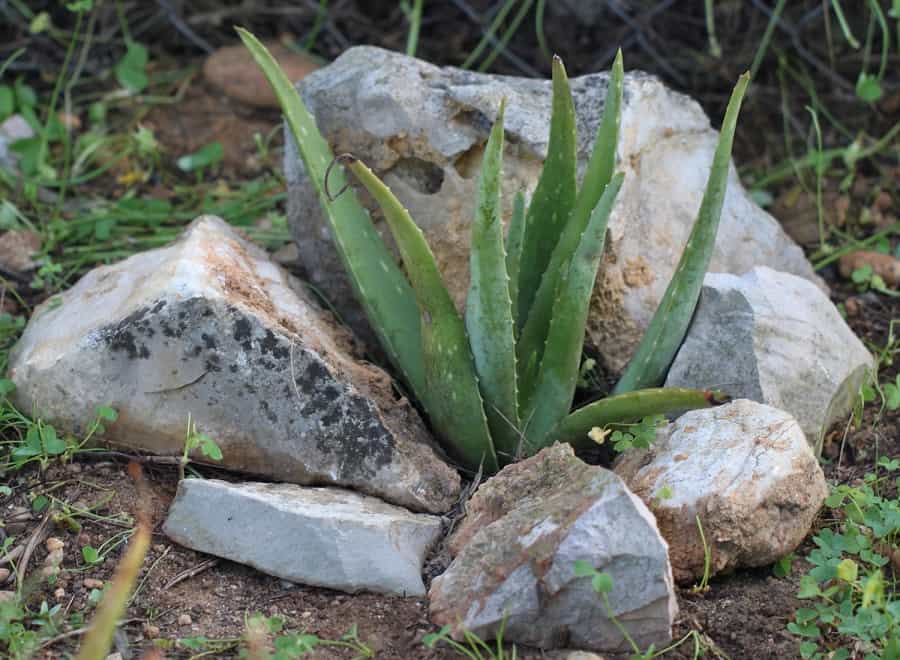
Strut your stuff! This unique creeping African aloe has slender spotty leaves when young that mature to green, all topped by deep carmine branched flower spikes.
Aloe krapohliana
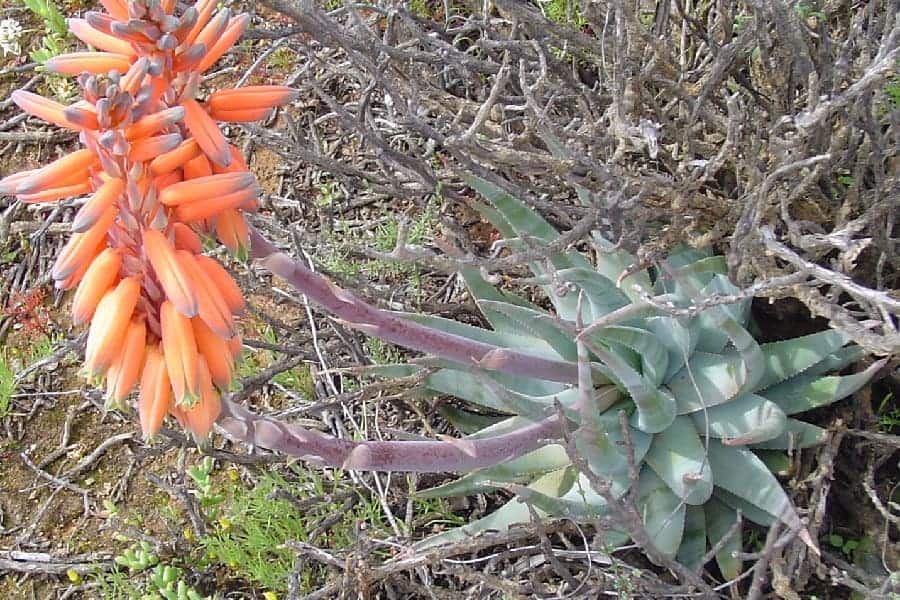
A tiny South African jewel, this stemless rosette with pale green upright triangle leaves is simply radiant both solo and in tight clusters.
Aloe lineata
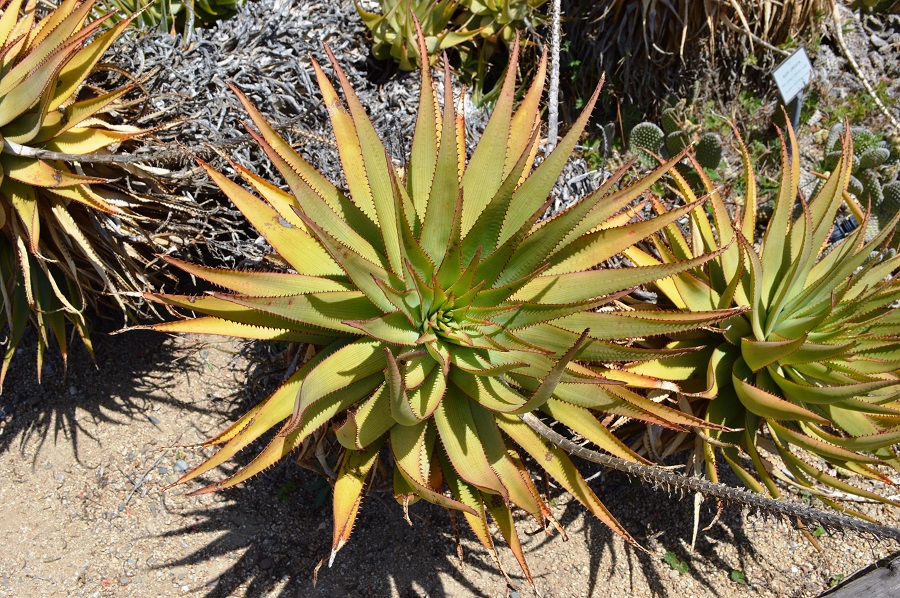
This salmon-flowering tree aloe starts as a ground-hugger but can grow over 6 feet tall, showing off its light green slender leaves edged in red spines.
Aloe mawii
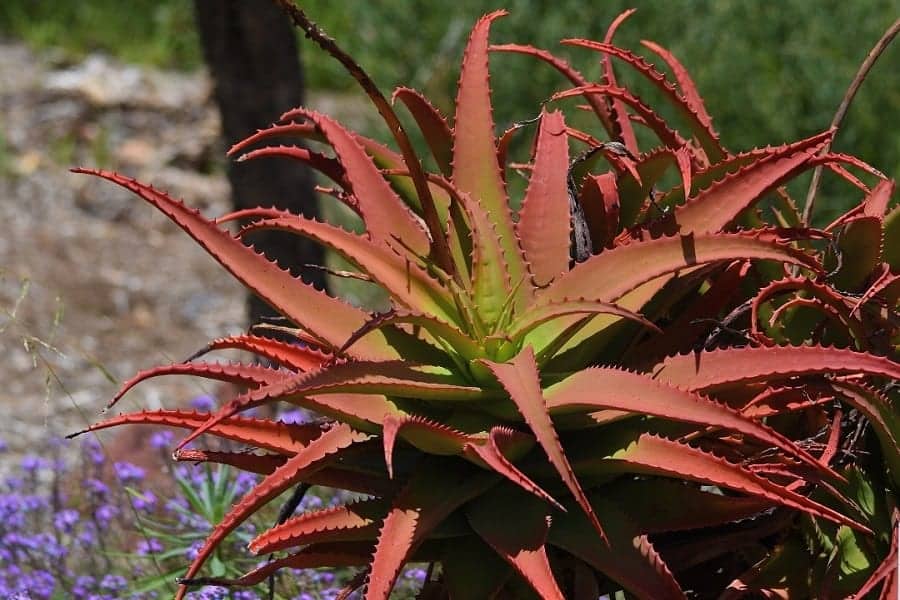
Earning its “Tree Aloe” name, this Malawian succulent develops thick, woody stems and branches sporting bright green leaves tipped with spikes.
Aloe Medusa
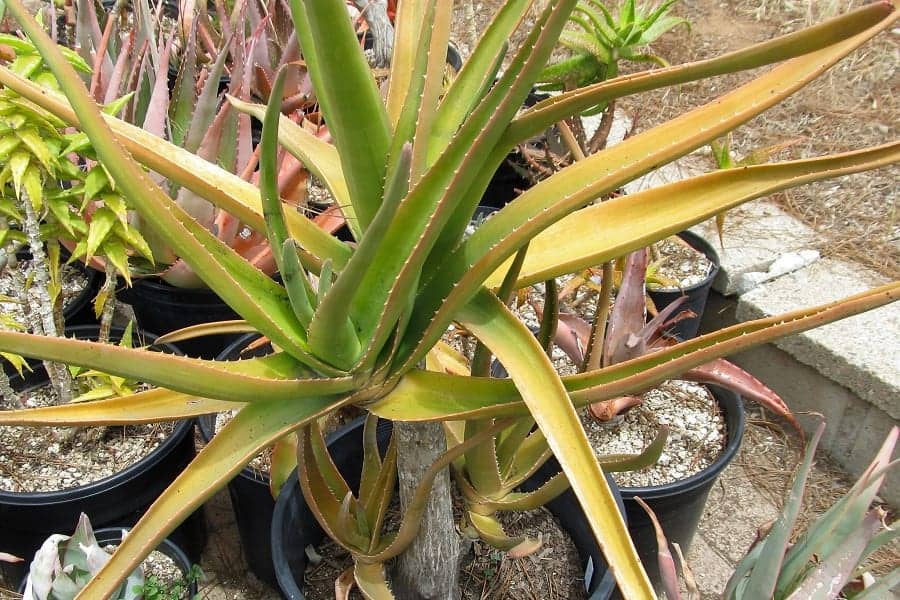
As wild as a monster from Greek myths, the Medusa aloe is all about the hair! This spindly-branched Mozambique tree can reach 12 feet when mature.
Aloe nobilis
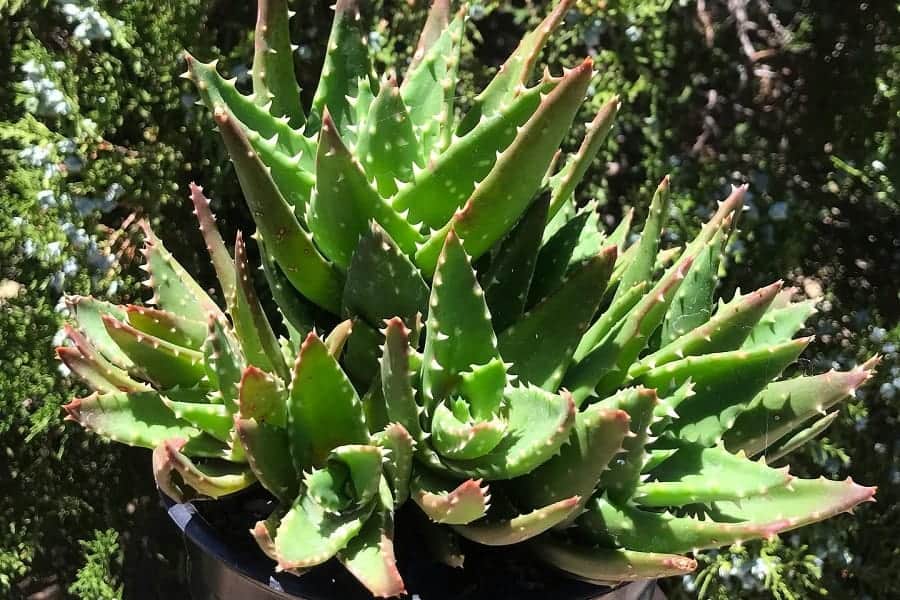
This low-growing rosette from South Africa earned its “Gold Tooth Aloe” nickname thanks to the sharp yellow-orange teeth lining its large, bright green leaves.
Aloe parvula
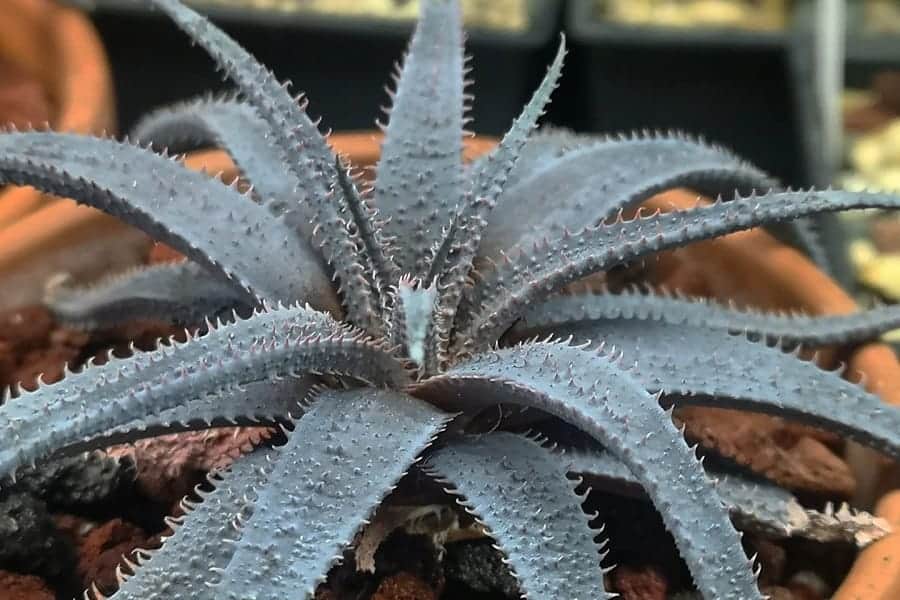
A real chameleon, this rosette from Madagascar can flaunt thick, spiny gray-green, purple, or entirely purple-blue leaves topped with yellow and red flowers.
Aloe peglerae
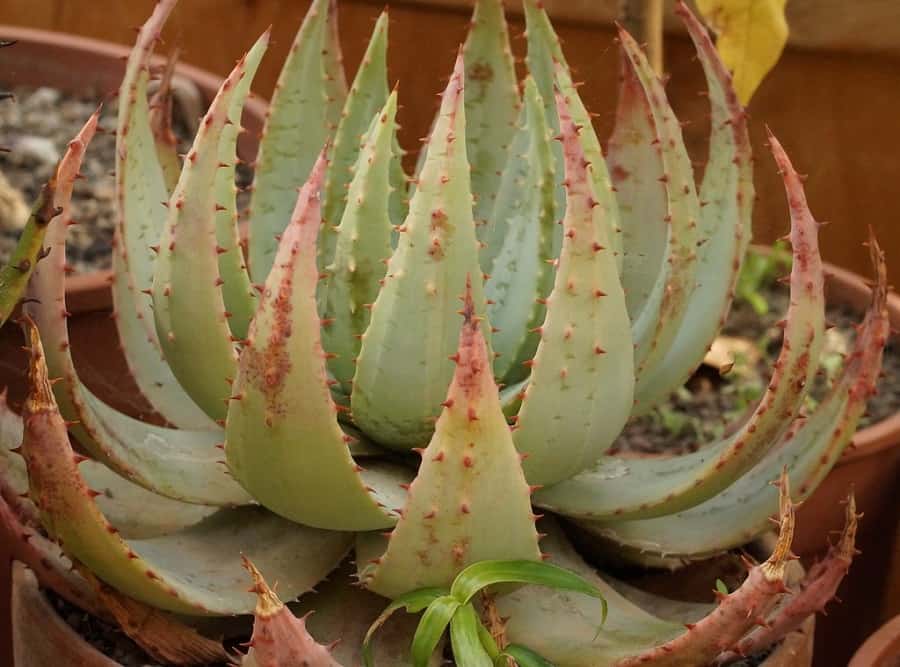
An endangered blue-green beauty, this delicate ensemble has gently curving spiky leaves forming an artful sphere under 16 inches of creamy white to pale red flowers.
Aloe pillansii
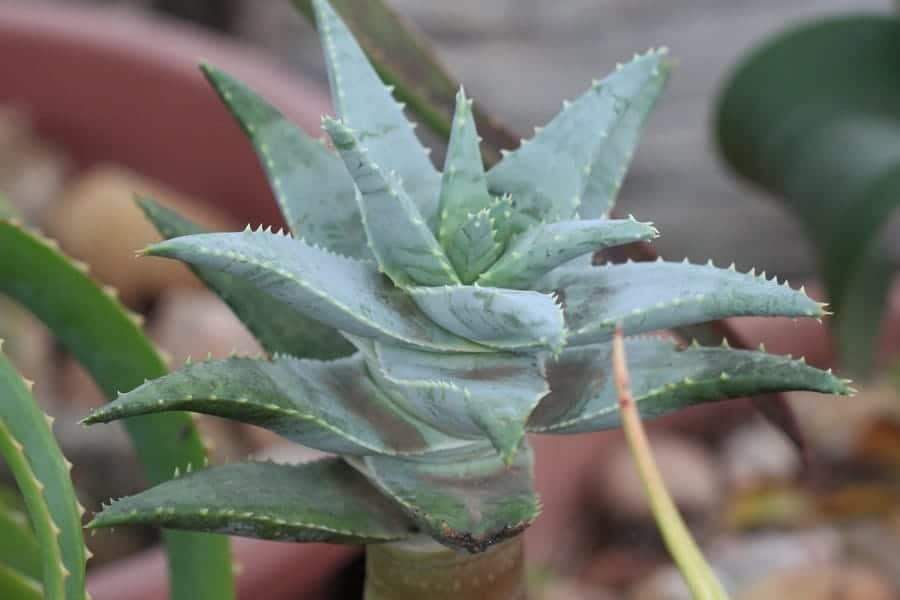
Towering up to 50 feet, this rare South African tree-like specimen is a total unit with its thick trunk covered in jazzy little side branches and rosettes.
Aloe polyphylla

Unlike typical aloes, the funky Spiral Aloe grows its egg-shaped purplish leaves in mesmerizing five-row helixes that can take a light frost.
Aloe rauhii
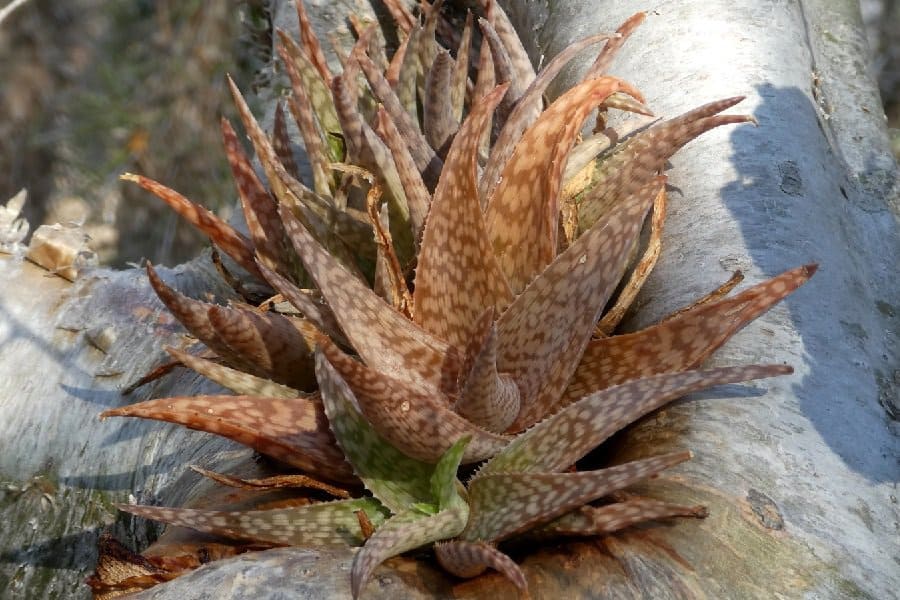
The “Snowflake Aloe” is hard to come by but easy to love with its rosettes of signature spotted green leaves and sunshine yellow flowers.
Aloe sabaea
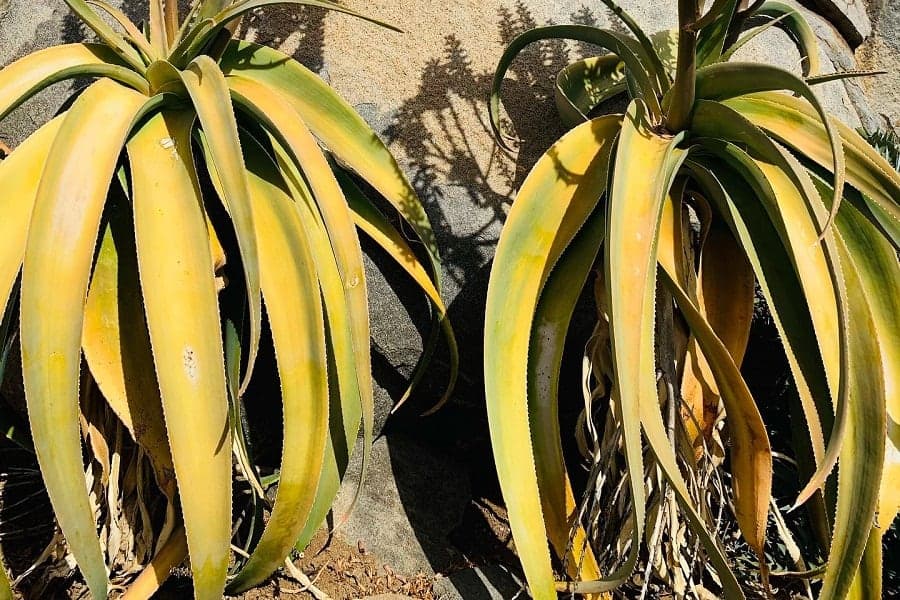
From Yemen, this slender 10-foot evergreen has a smooth trunk crowned with elegant arching green leaves dangling bell-like flowers along the sides.
Aloe saponaria (Aloe maculata)
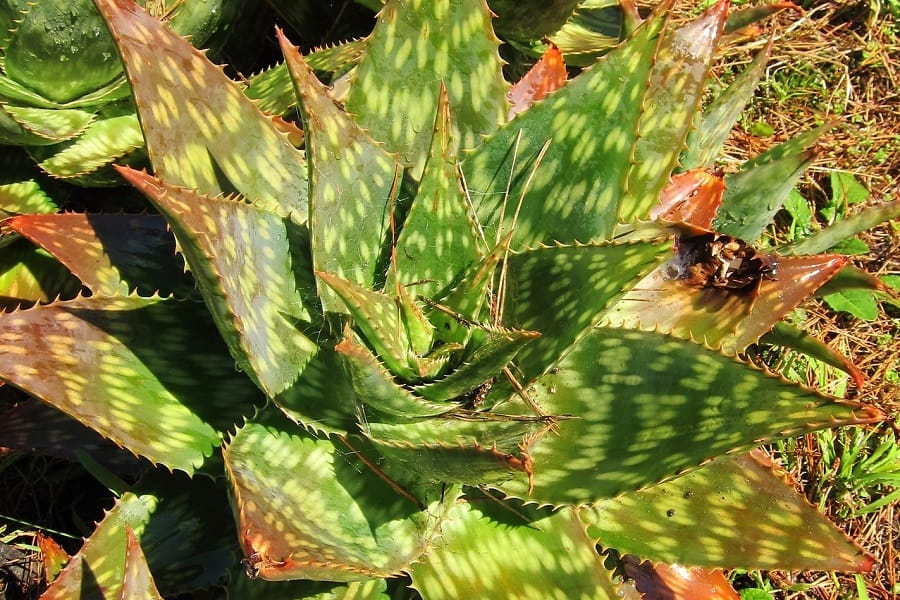
You’ll go nuts for the soapy gel inside the leaves of this eye-catchingaloe that pushes out pink, orange, yellow and red blooms on 16-39 inch stalks.
Aloe sladeniana
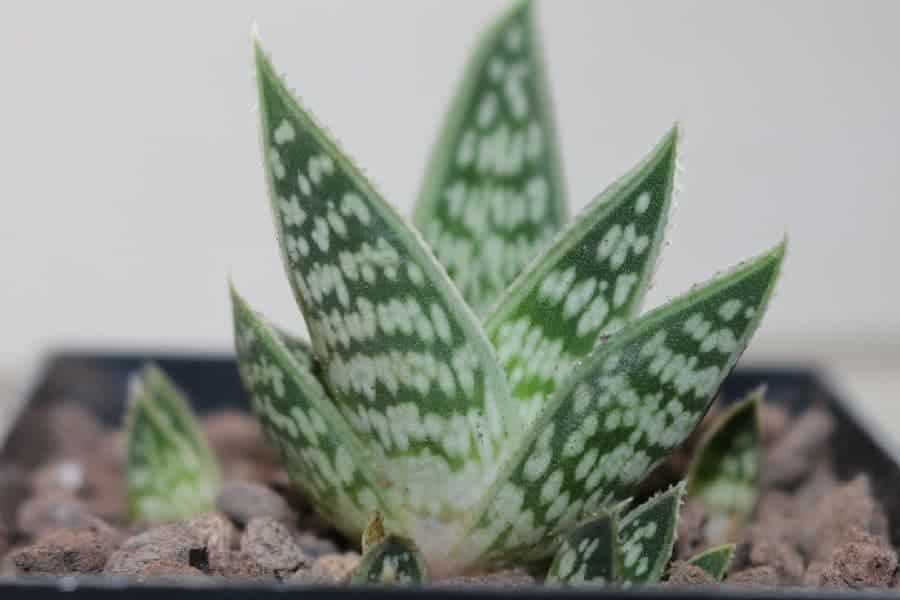
Simple but chic, this one grows a cheery green rosette full of white-spotted leaves lined with tiny teeth with pops of pink or white flowers.
Aloe somaliensis
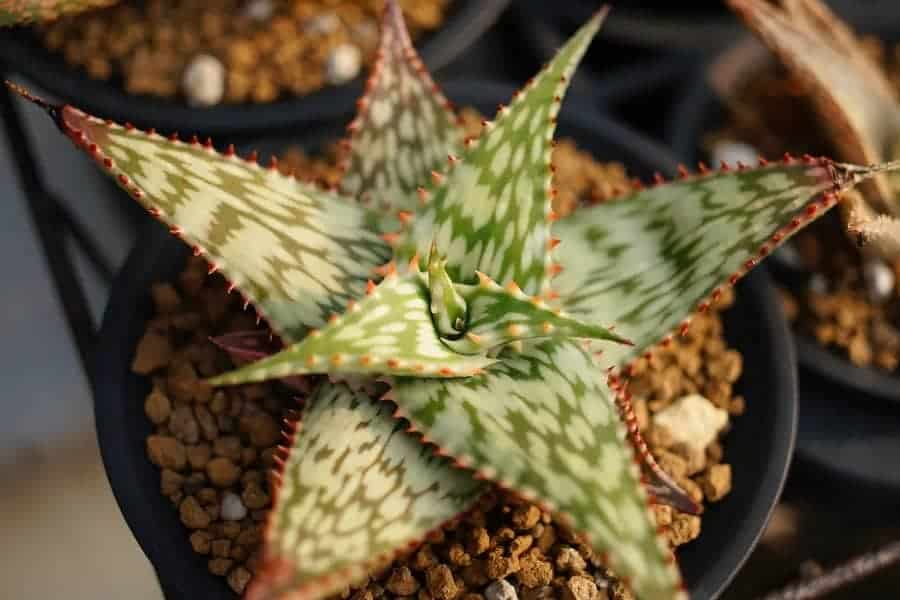
This unassuming Somalian native forms a simple rosette of fleshy, triangular green leaves covered in white spots and tinged with red edges. But when it blooms, look out! Vibrant pink or red flower clusters emerge to add a burst of color to this otherwise subtle succulent. Low-maintenance charm meets eye-catching flair.
Aloe striata
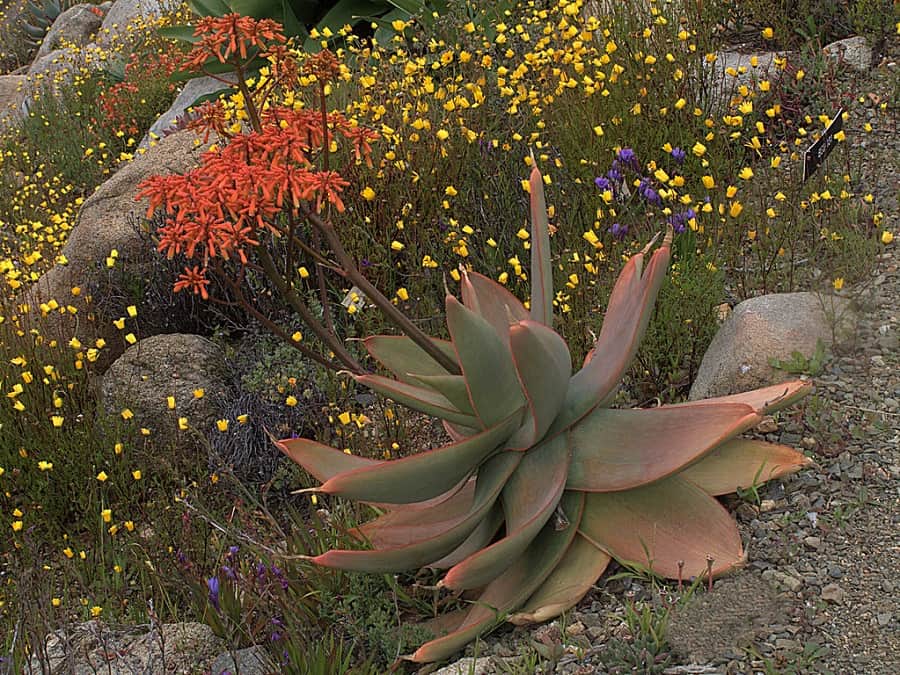
While its buds are plain, this coral-flowering tree aloe’s branches can reach 5 feet and are draped in a medley of light green leaves with stripes. The striated foliage adds beautiful texture, complementing the vibrant red-orange blooms that emerge in summer for an eye-catching display. This unique aloe knows how to make a statement!
Aloe suprafoliata
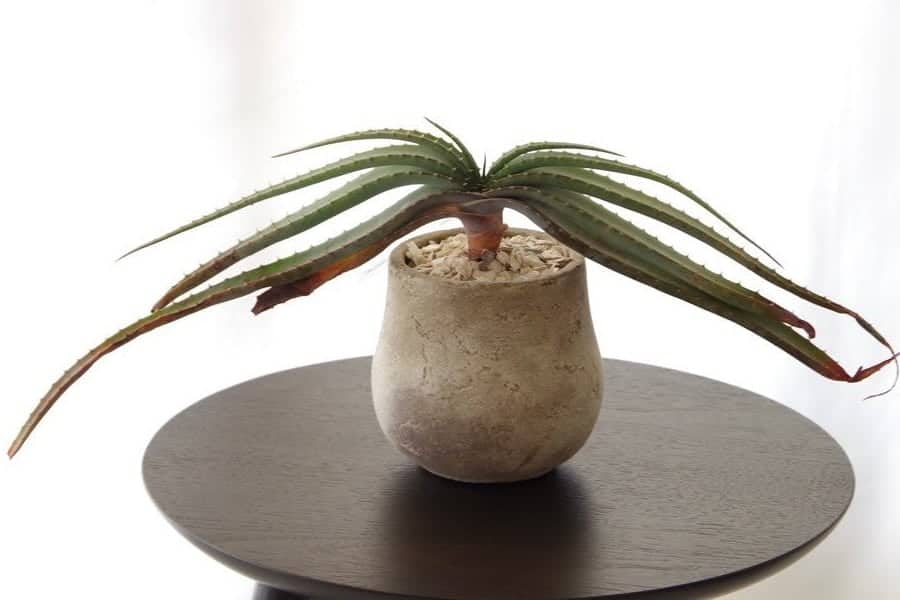
This aloe takes quirky growth to another level – instead of a typical rosette, its thick green leaves layered with reddish-brown margins arrange in two funky stacked columns!
Aloe suzannae
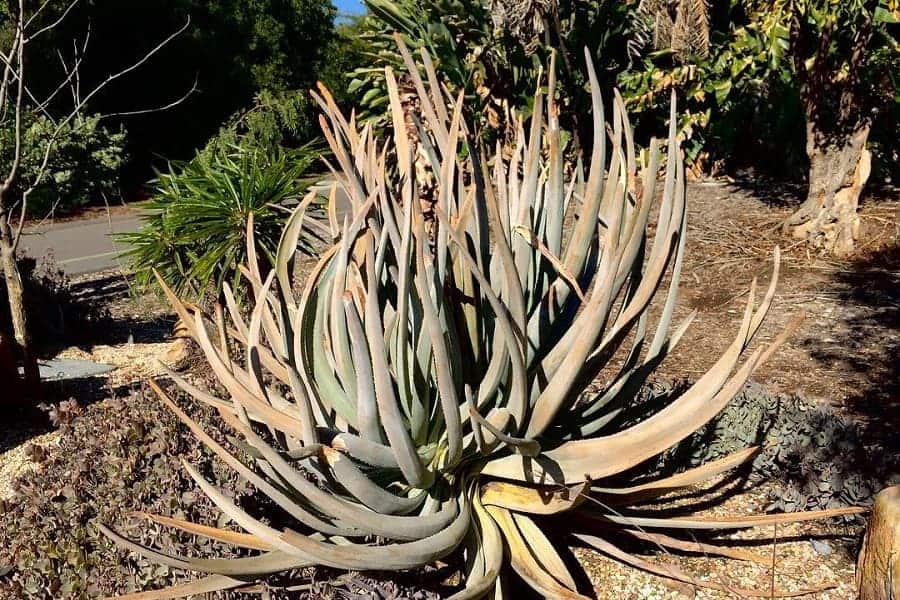
Imagine a tiny palm tree but make it a succulent! This aloe can grow up to 12 feet tall with rosettes of dark green leaves crowning its slender trunks and branches.
Aloe thraskii
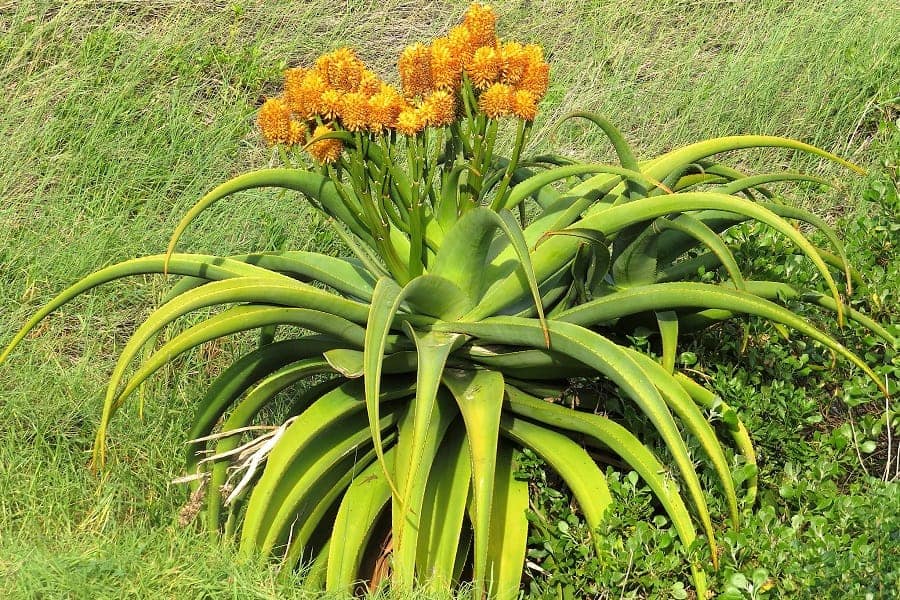
The “Dune Aloe” puts on a show with its massive pale green-gray spiky rosettes that arch downward, sending up branches of yellow-orange buds.
Aloe ‘Twilight Zone’
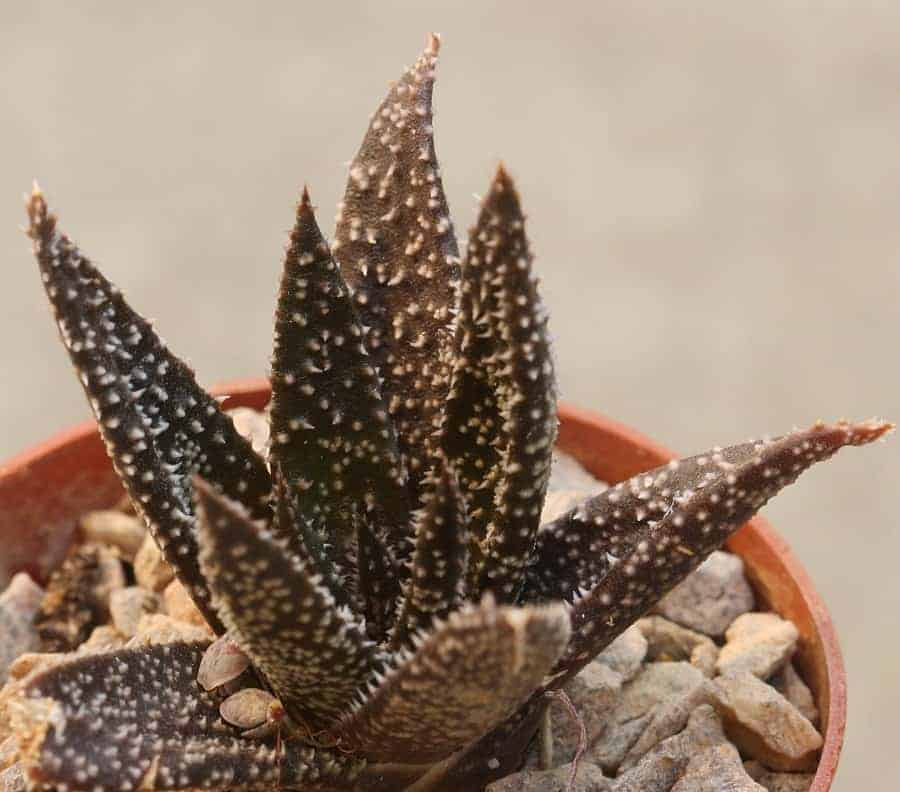
This hybrid of haworthia and gasteria brings the drama with clumps of long, blackish leaves covered in raised white spots and brandy orange flowers.
Aloe variegata
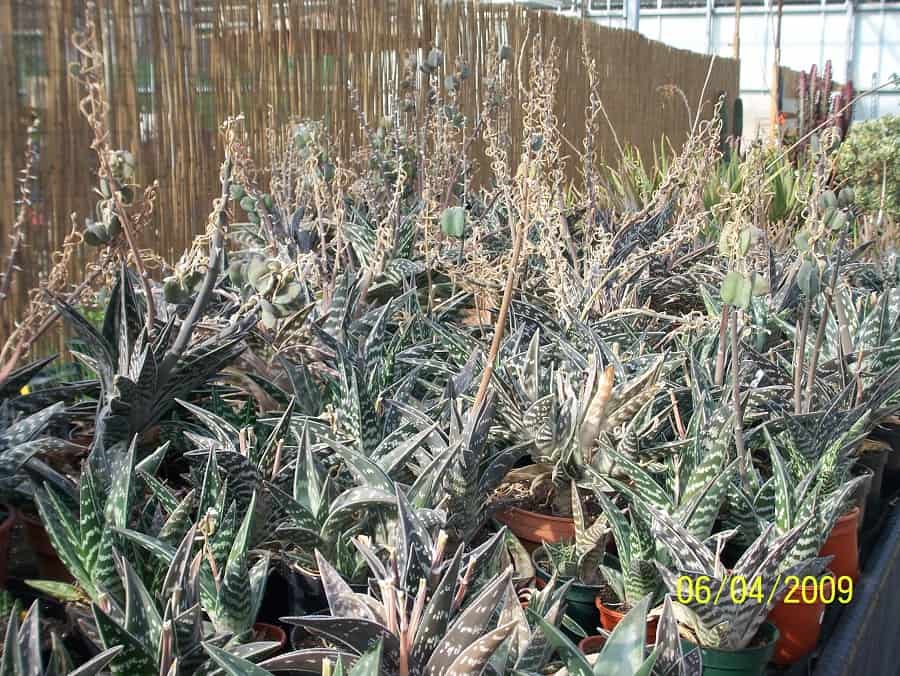
At under 16 inches, this dwarf tree aloe is petite but packs a punch with its lush green and white striped diamond-shaped leaves tiled around its stem.
Aloe vera
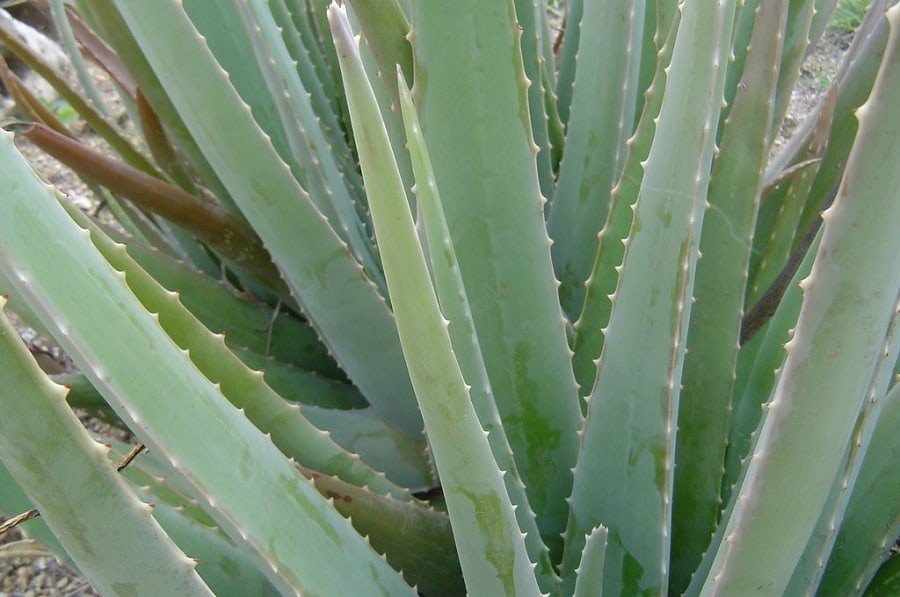
This celebrity succulent needs no introduction – the famous aloe vera is a household name and skincare staple. Behind those thick, spikey green leaves lies a clear, gooey gel packed with soothing and healing power. But aloe vera is more than just a one-trick-ponic – it also delights with beautiful tubular yellow-orange flowers clustered on 24-inch stalks in spring and summer. Functional and beautiful, no wonder this botanical queen reigns supreme in homes everywhere! Whether you need a little sunburn relief or just want to add fresh, spiky style to your space, you can’t go wrong with an aloe vera.
Read also:
How To Grow An Aloe Vera Without Roots
Aloe vryheidensis
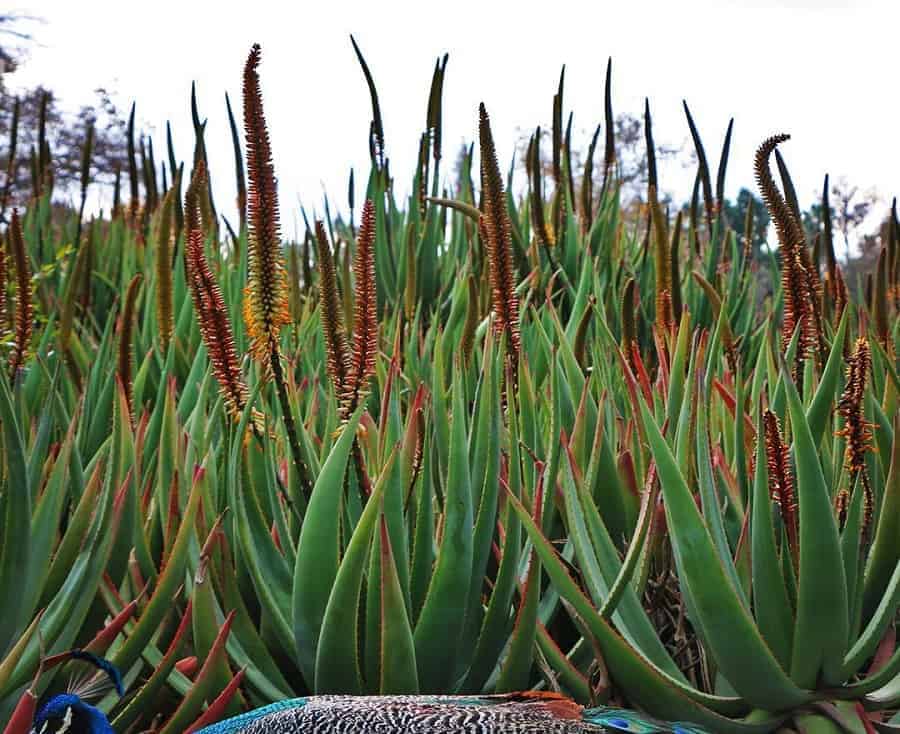
A big, bright personality to match its potential 6-foot height! This stemless rosette’s blue-green leaves blush red when stressed and hot pink flowers arrive.
Aloe ‘Walmsley’s Blue’
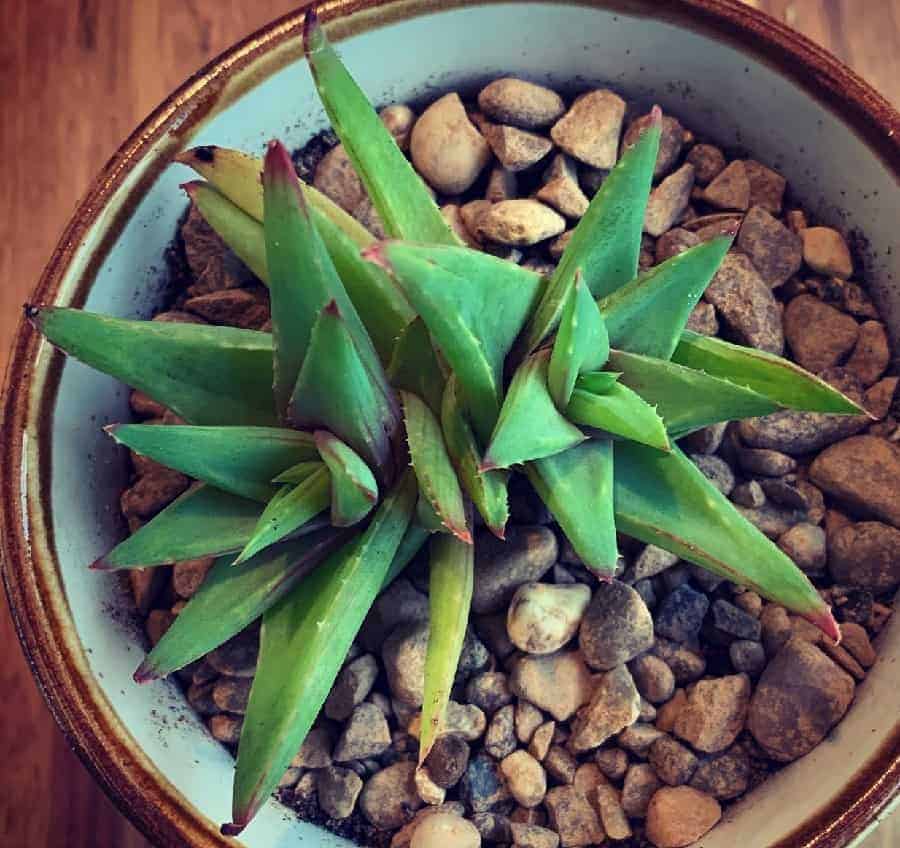
Short but sturdy, this blue-green cluster topped with red-orange flowers has toothed fleshy leaves growing up to 1-foot tall plus mini basal stems.
Aloe zanzibarica
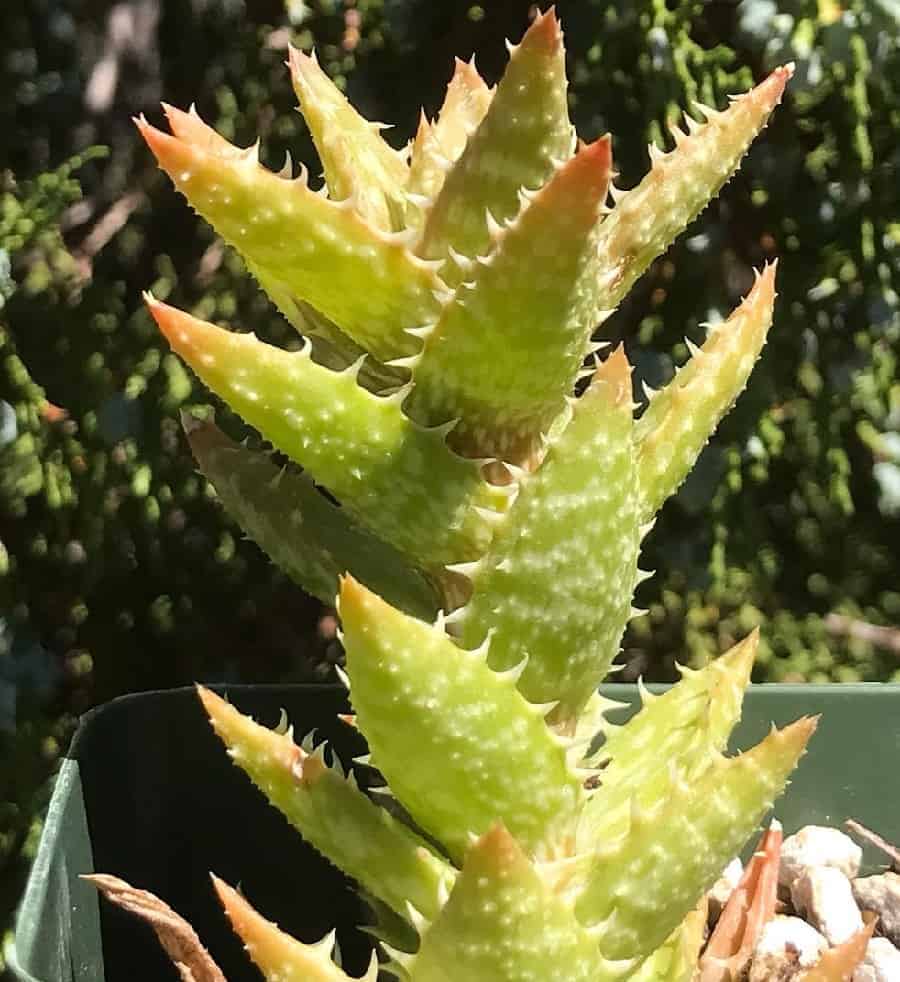
The striped “Tiger Tooth Aloe” earns its feisty name from the white-spotted triangular green leaves and spiky teeth lining its multiple tight rosettes.
Read also:
Why, When, and How to Prune Aloe Plants
Plants that Look Like Aloe
At first glance, you might think these plants are aloes in disguise. But looks can be deceiving – while they share some spiky succulent similarities, this gang of aloe lookalikes is a totally different bunch. Here’s the inside scoop to help you spot the fakes:
Agave
Talk about long-lost cousins! Agaves and aloes are both succulent superstars rocking the rosette look. But don’t be fooled by their twinsie vibe – underneath those fleshy leaves, agaves are packin’ fibers while aloes have a thick gel. One wrong move and that agave sap can leave you stuck (and stung)! Safety first, plant pals.
Related Post:
80+ Types of Agave Plants With Pictures and Names
Cacti
From their funky shapes down to their spines, it’s easy to see why you might confuse a cactus for an aloe. But don’t be pricked by their visual trickery – cacti are all stem while aloes are all about those luscious leaves. One’s an American desert native, the other a trendy Africanfluencer. Two different worlds, one spikey spirit!
Haworthias
Whoa, talk about a plant looking like it hired an aloe’s stylist! With their petite rosette of windowed leaves, it’s no wonder haworthias get mistaken for mini aloe mania. But look closer and you’ll see haworthias have their own unique geometric vibes going on with those slick succulent patterns. An aloe may never dre to dawn such sculptural looks!
Gasterias
Another aloe impressionist taking the spiky succulent game to new heights. Gasterias love to flex their muscular leaf formations into wild patterns and pretty rosettes. But peek under those fleshy exteriors and you’ll find gasterias are rocking a very different inner life from their aloe lookalikes. Variety is the spice of life!
